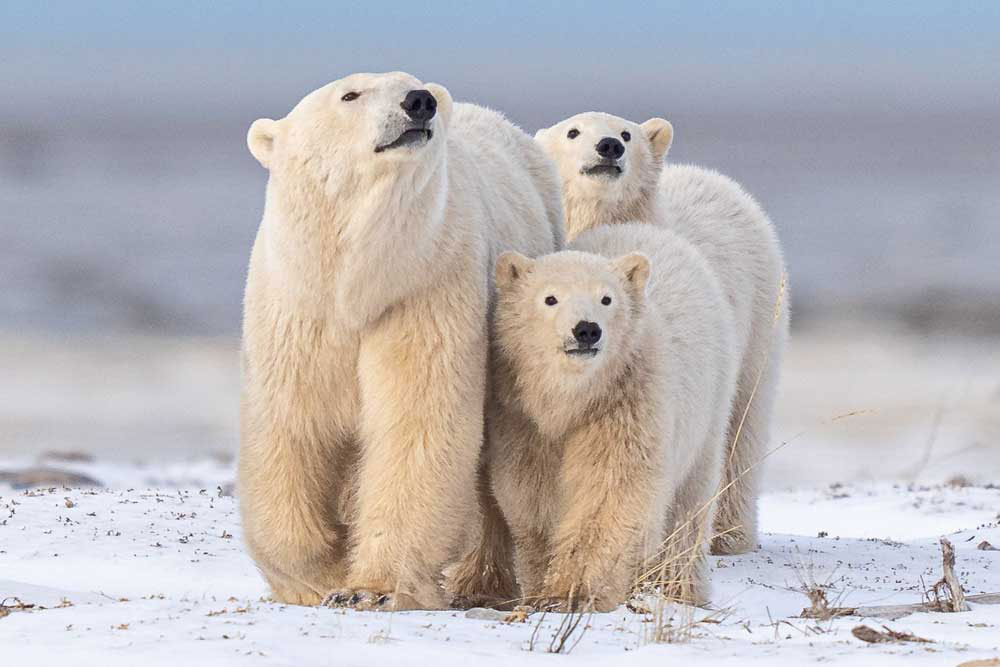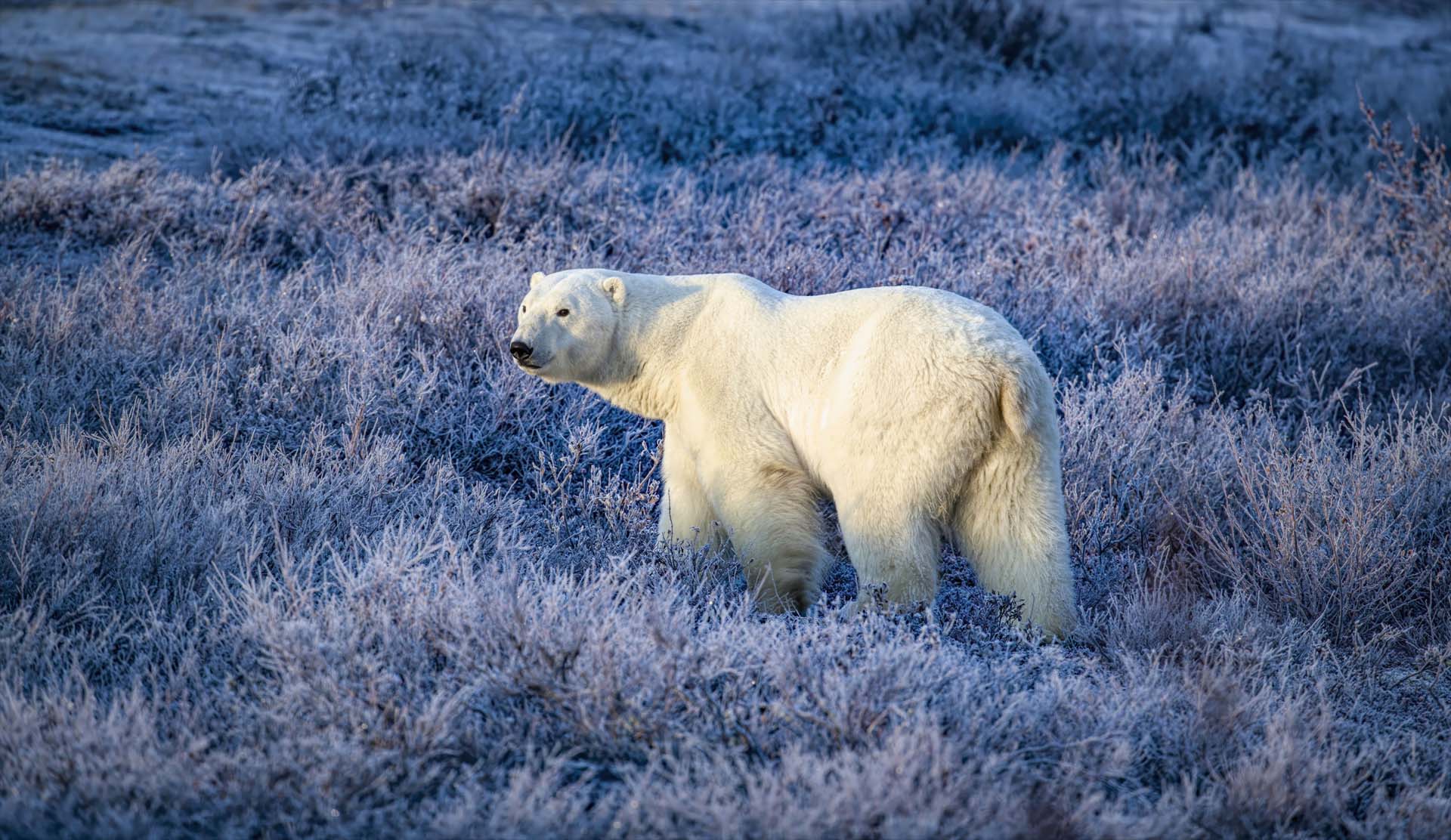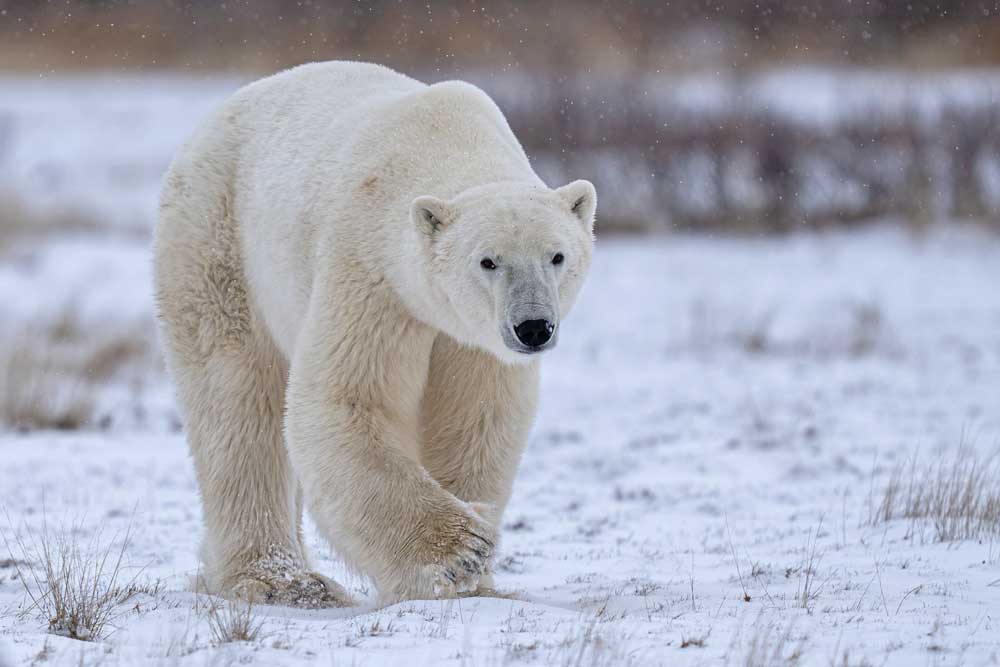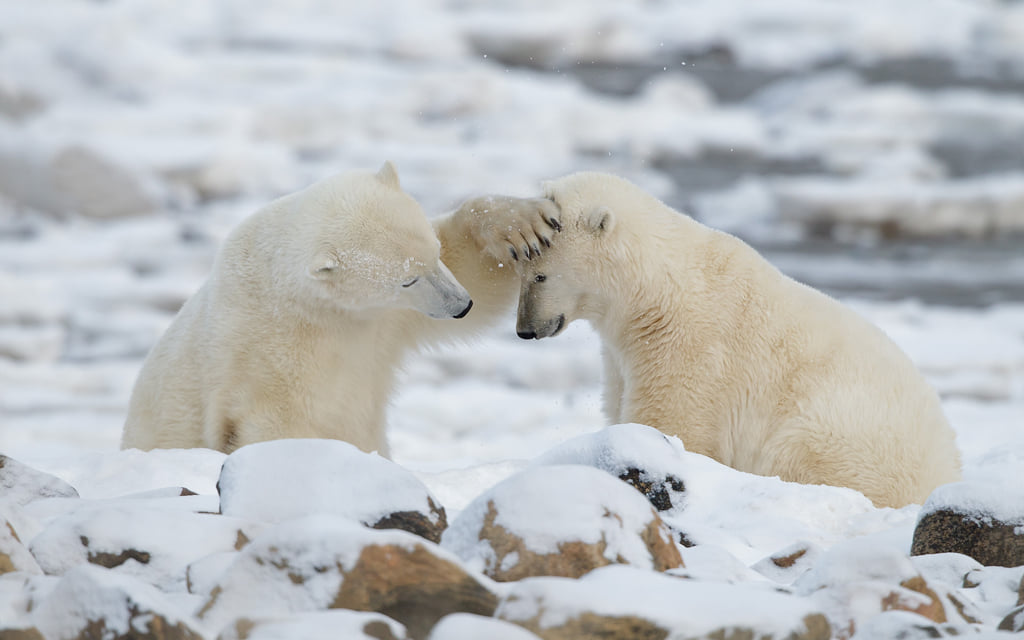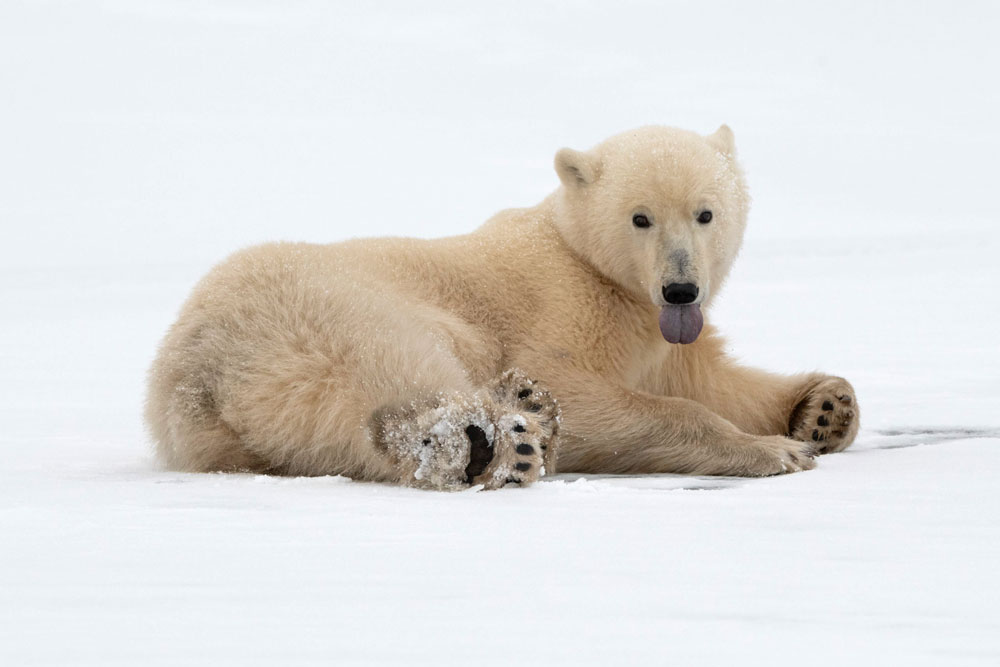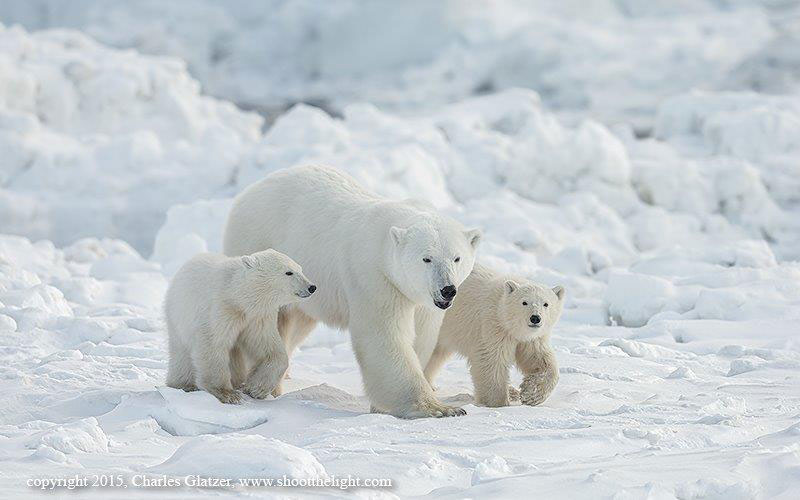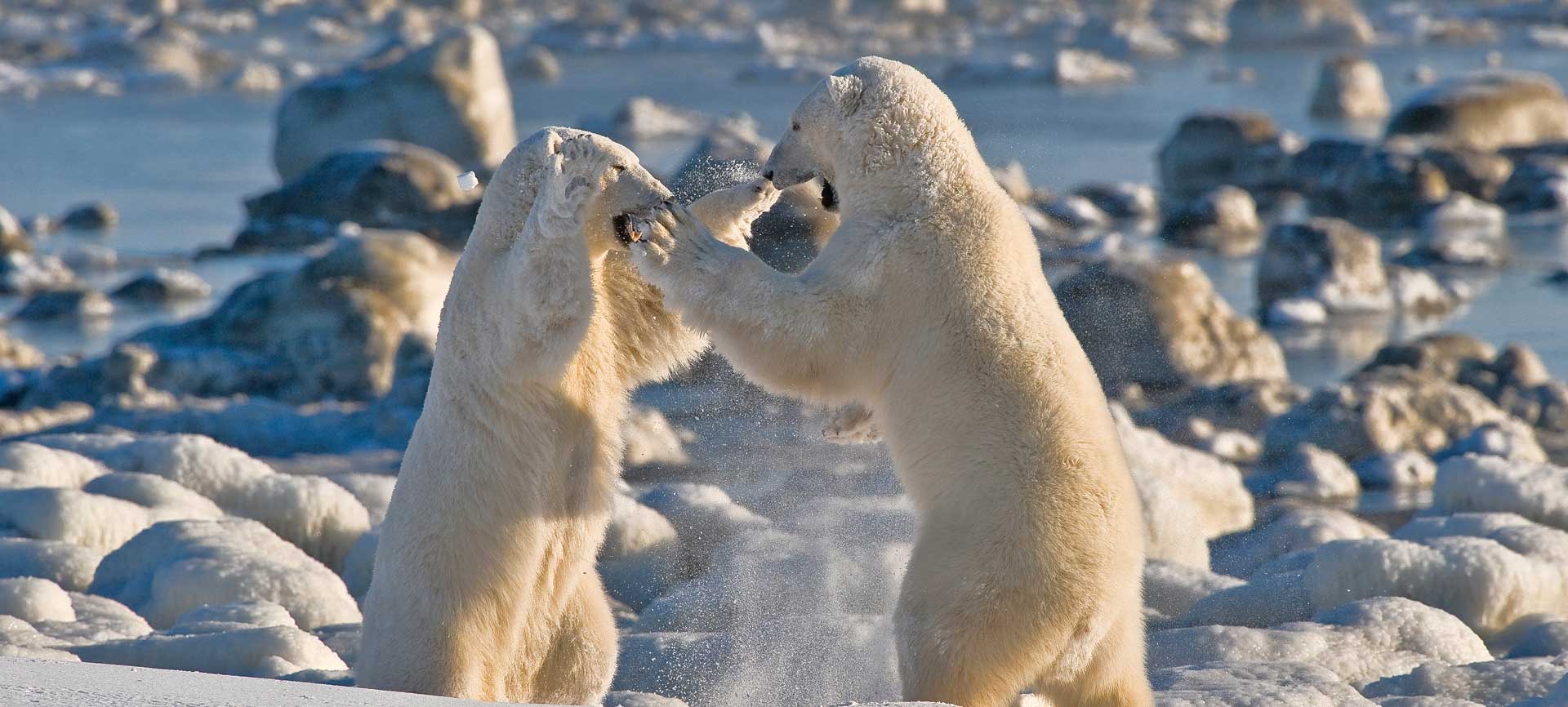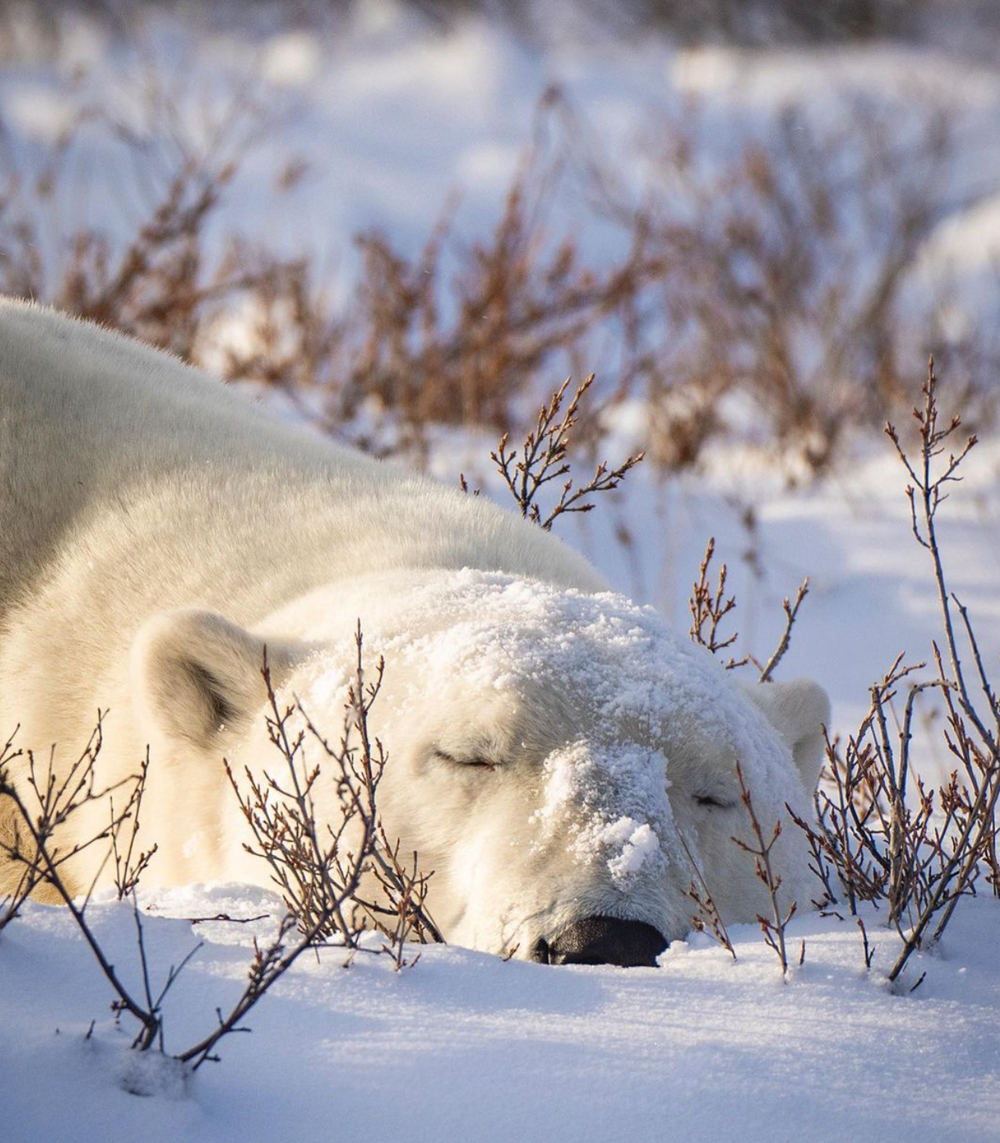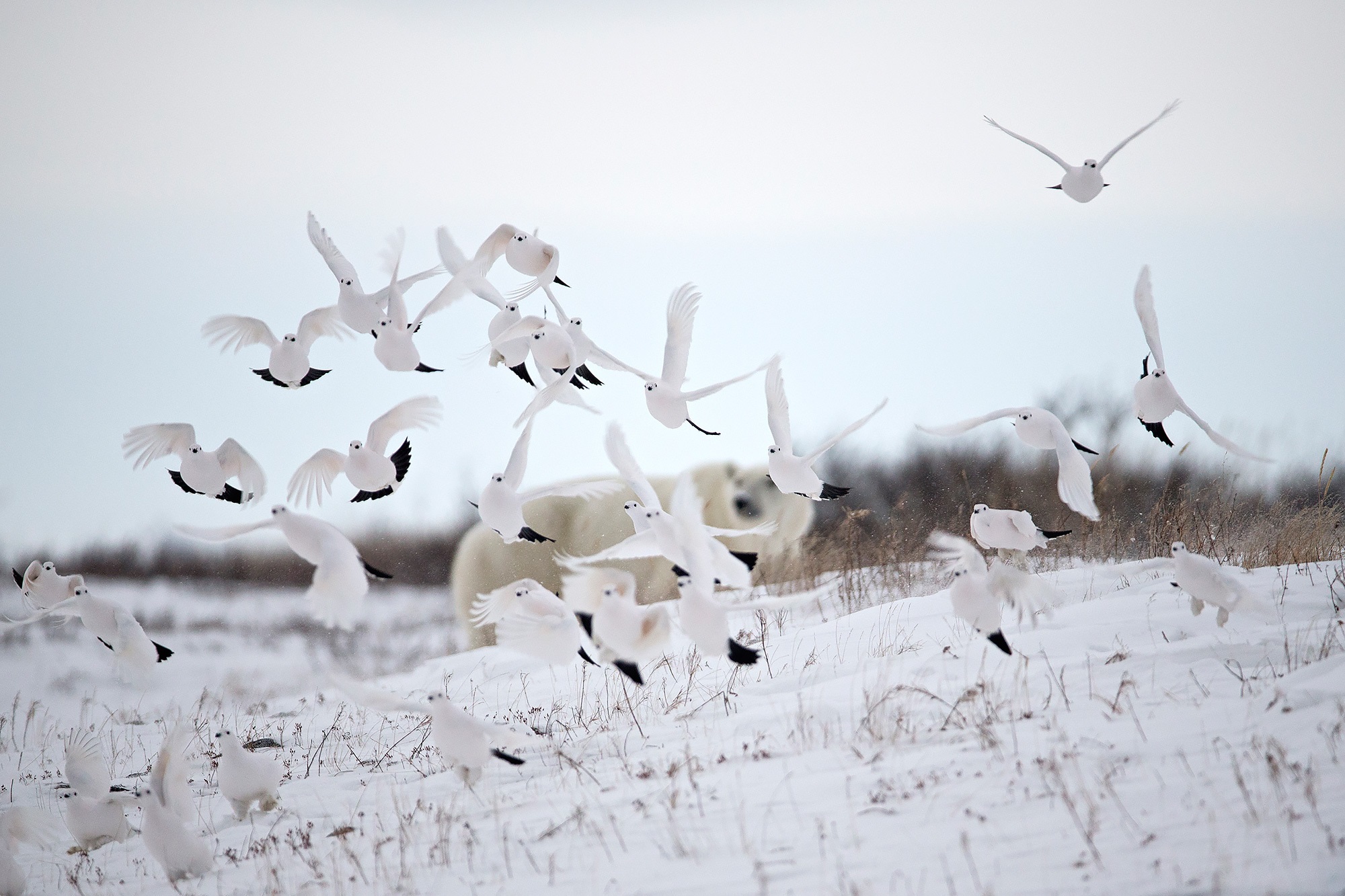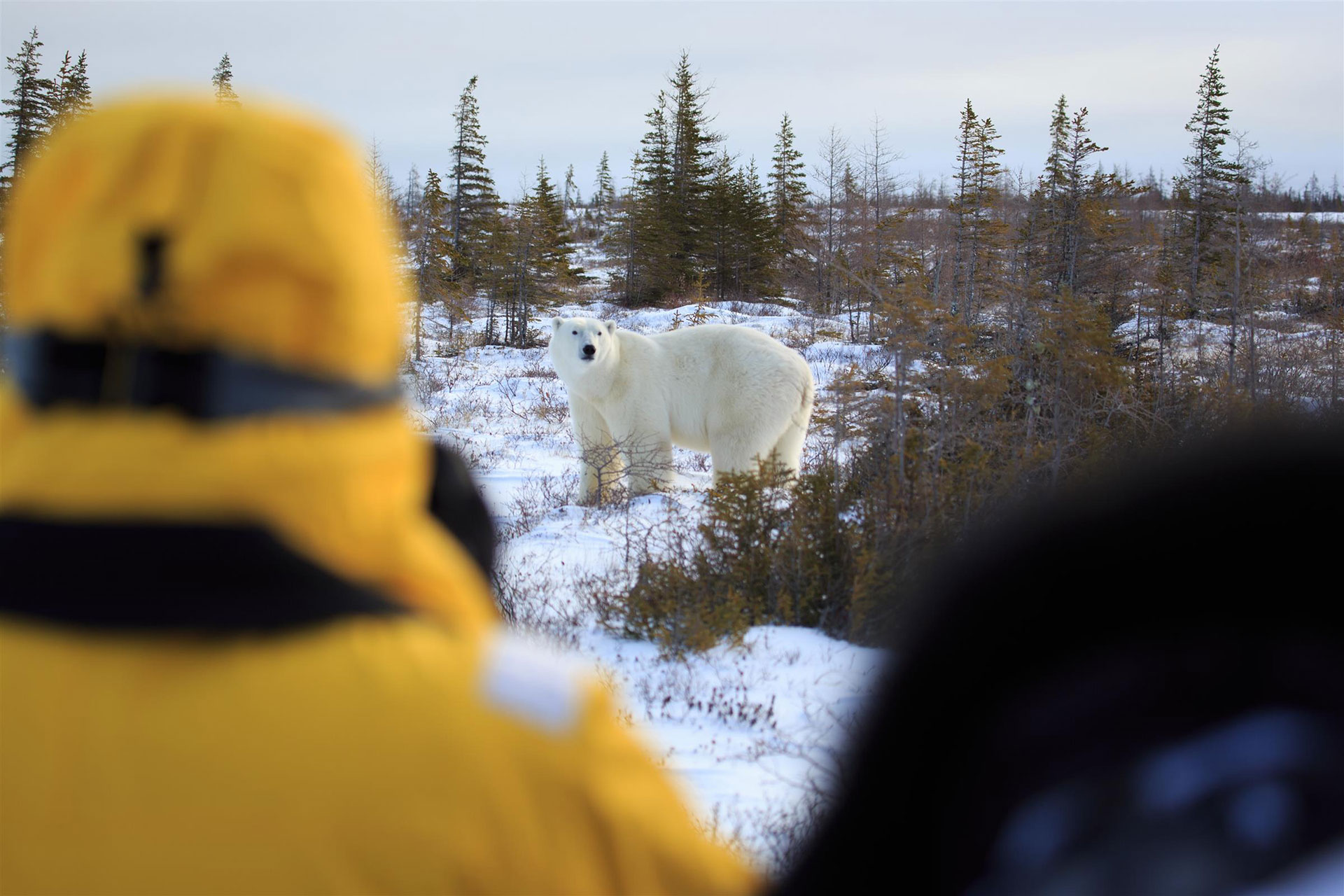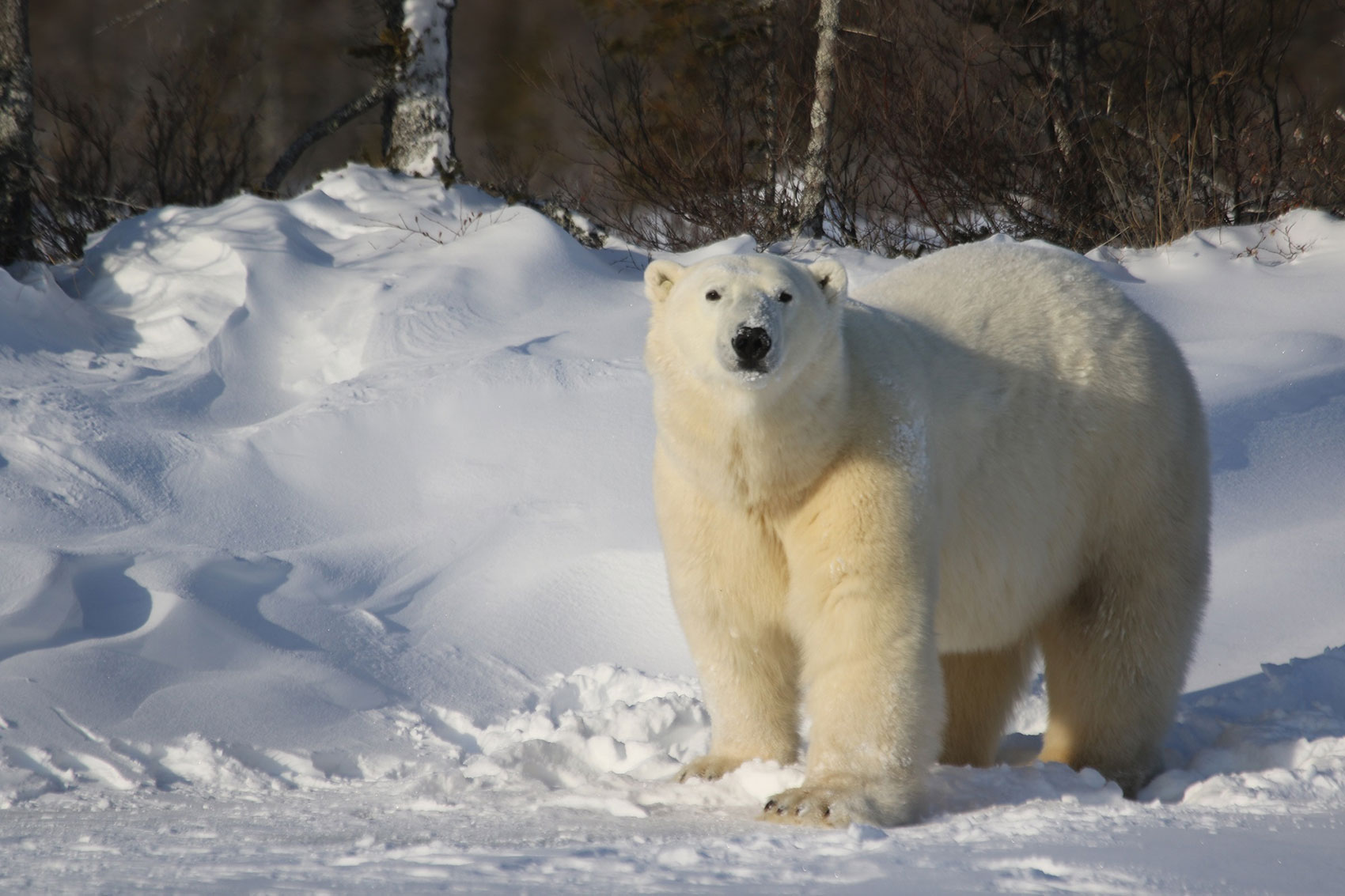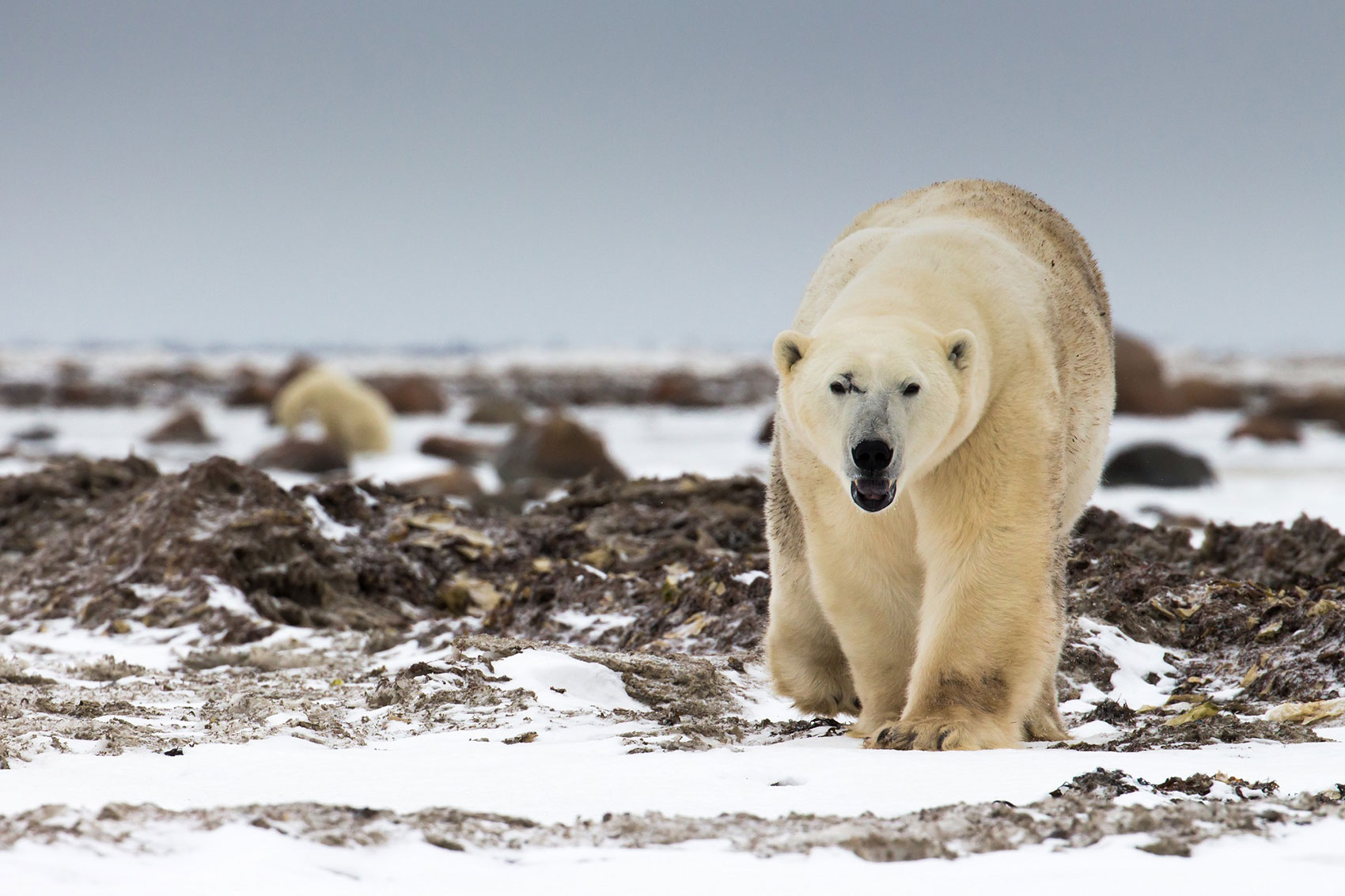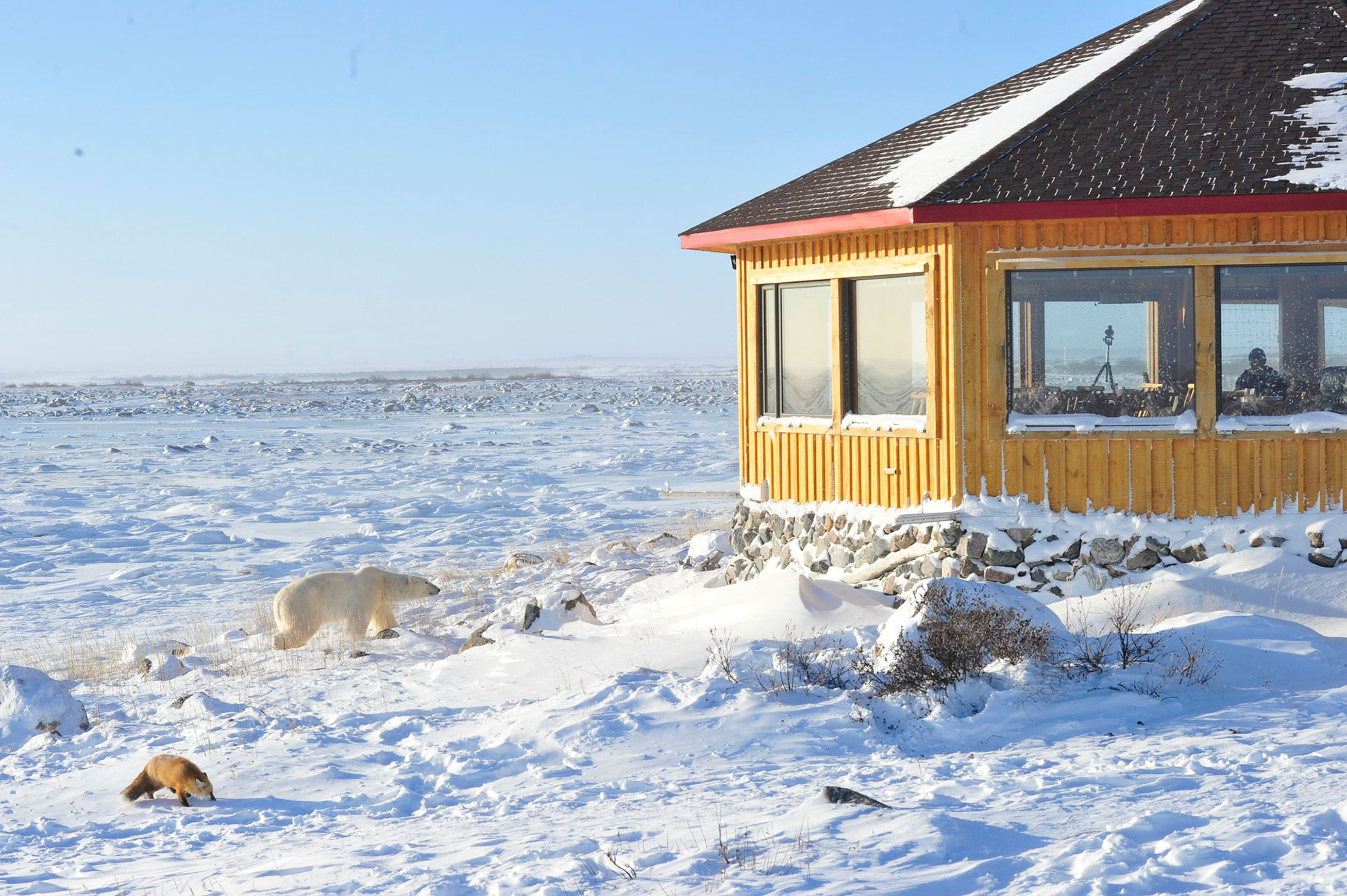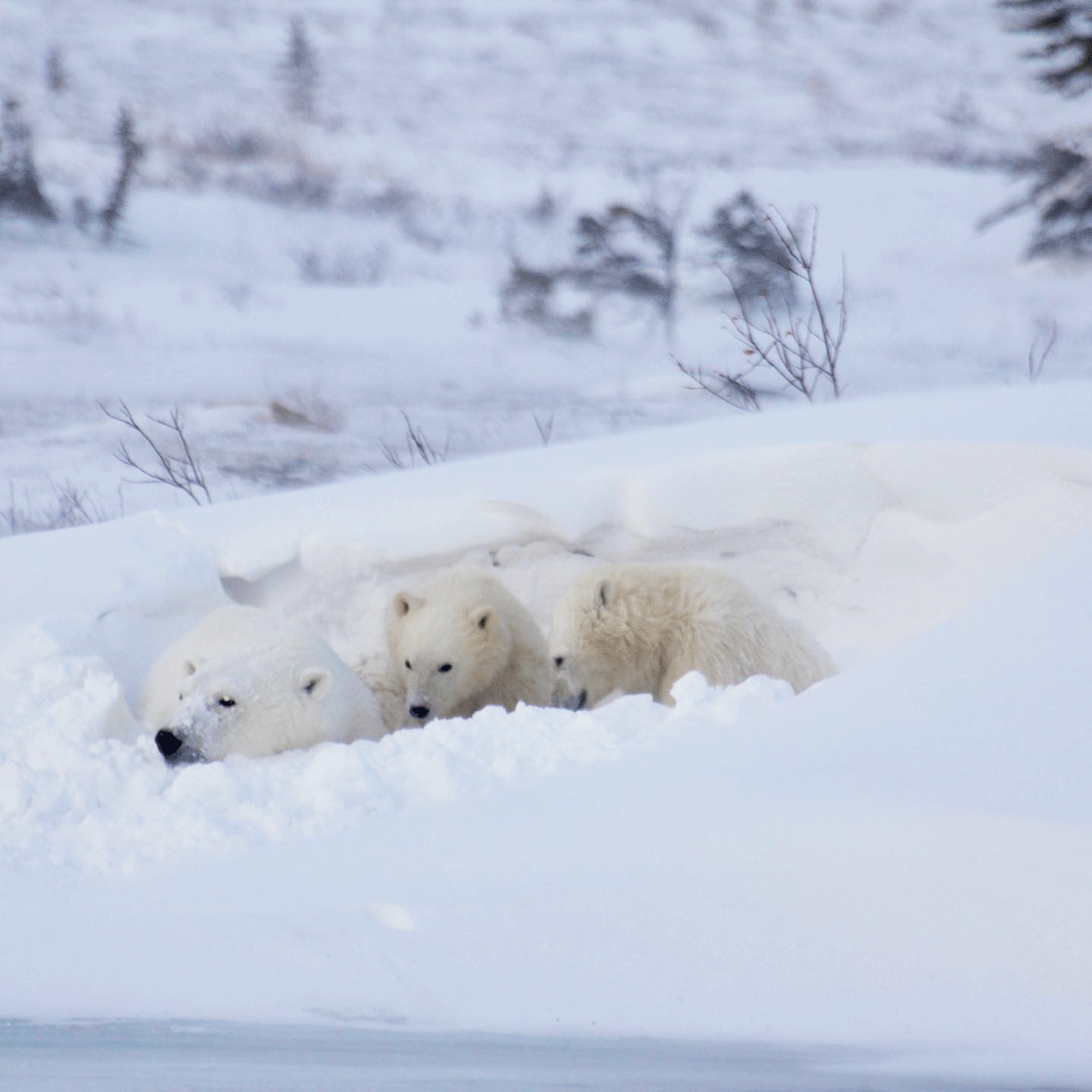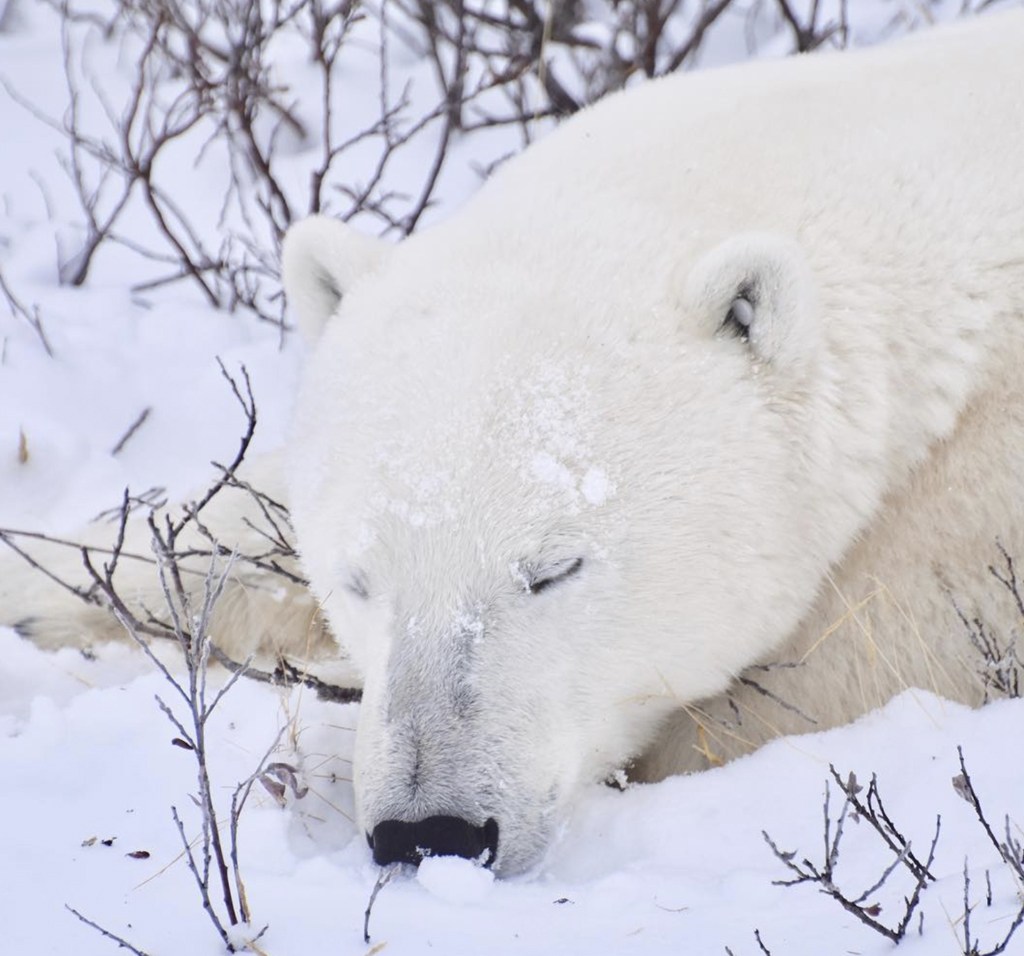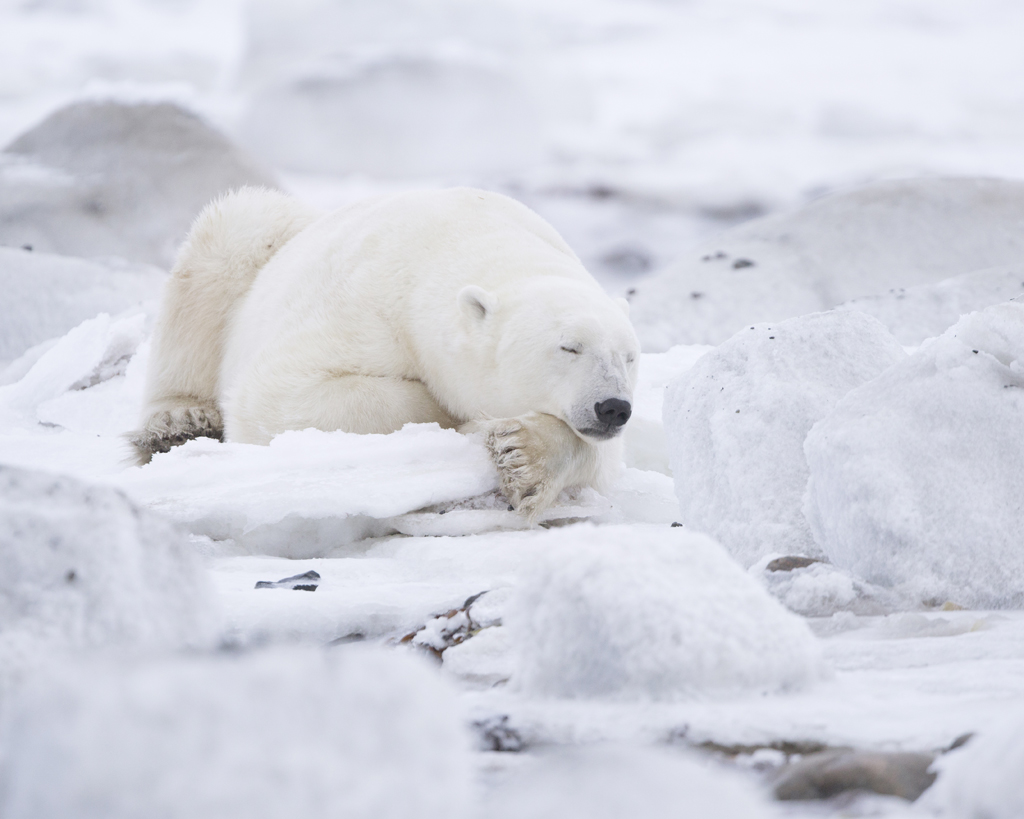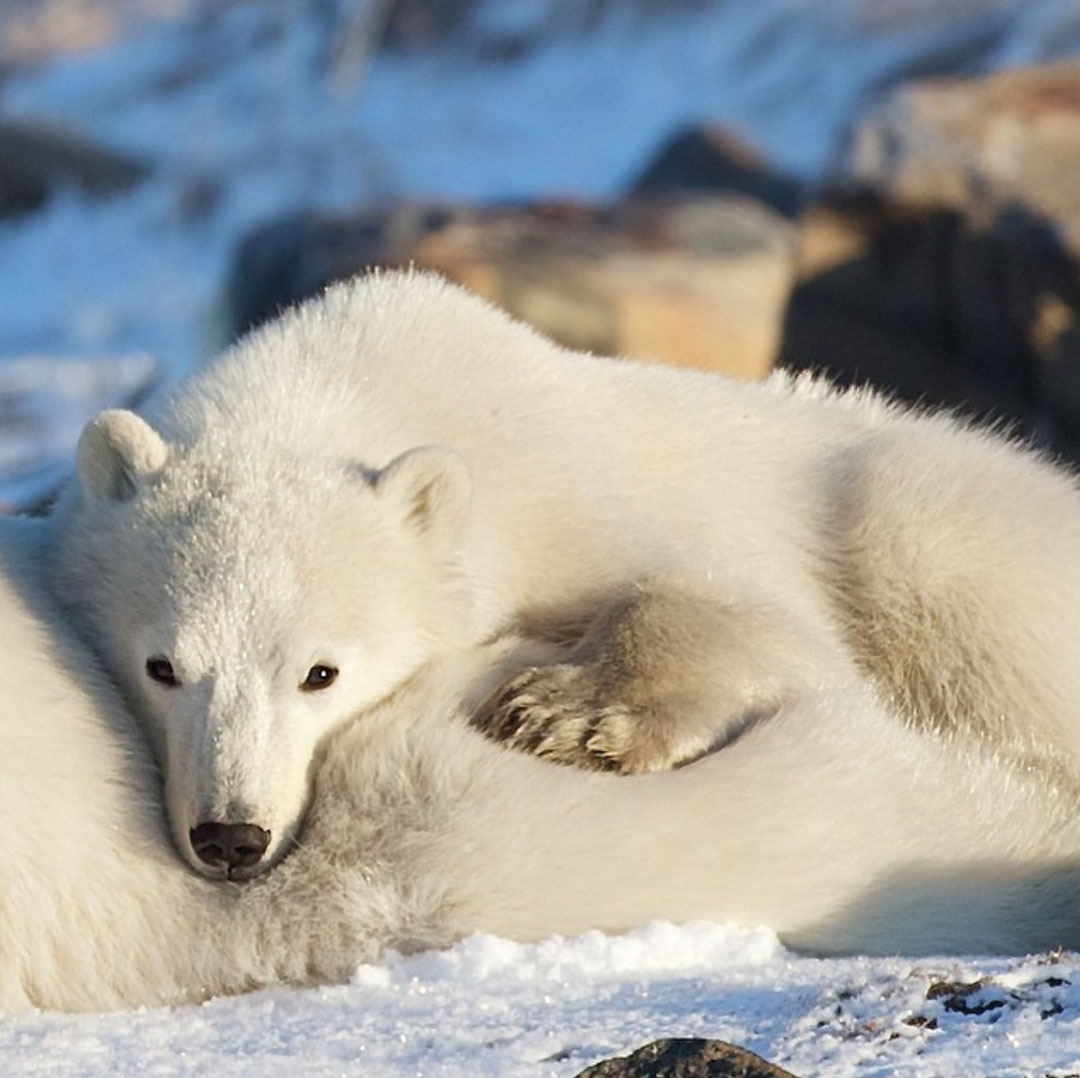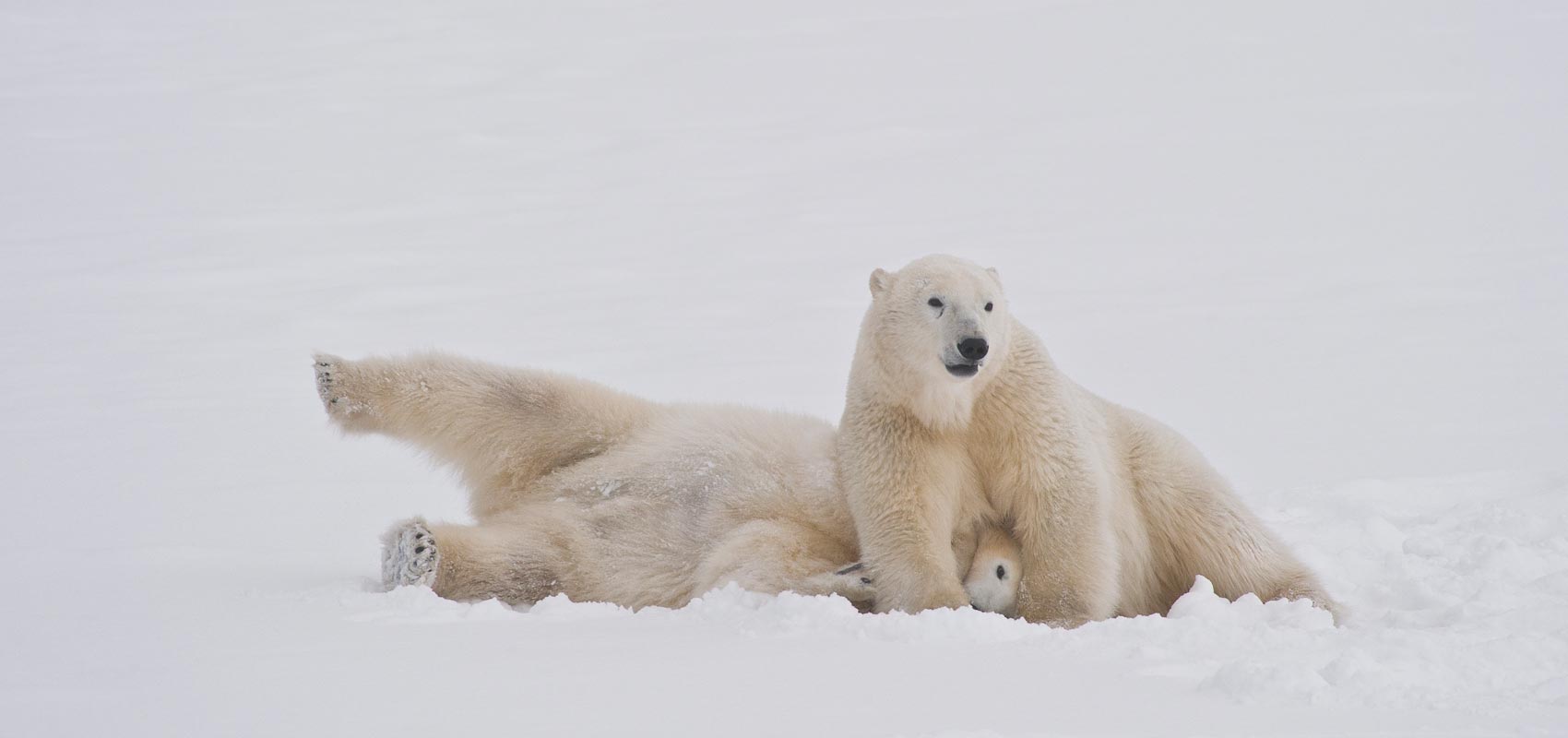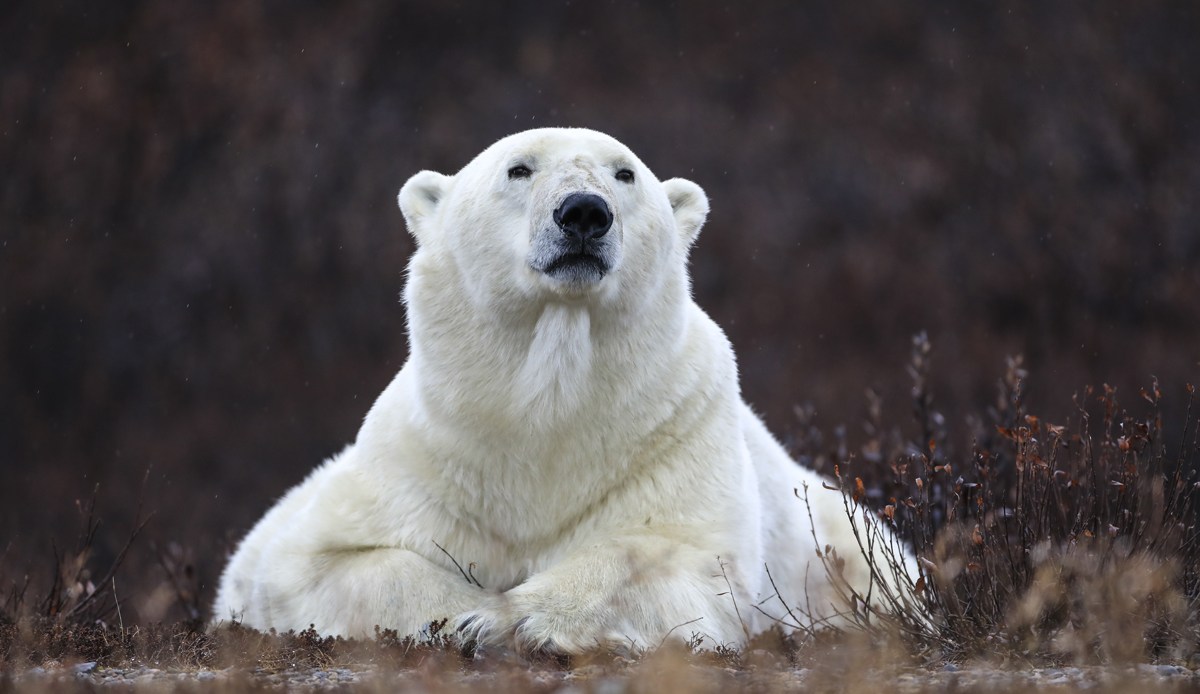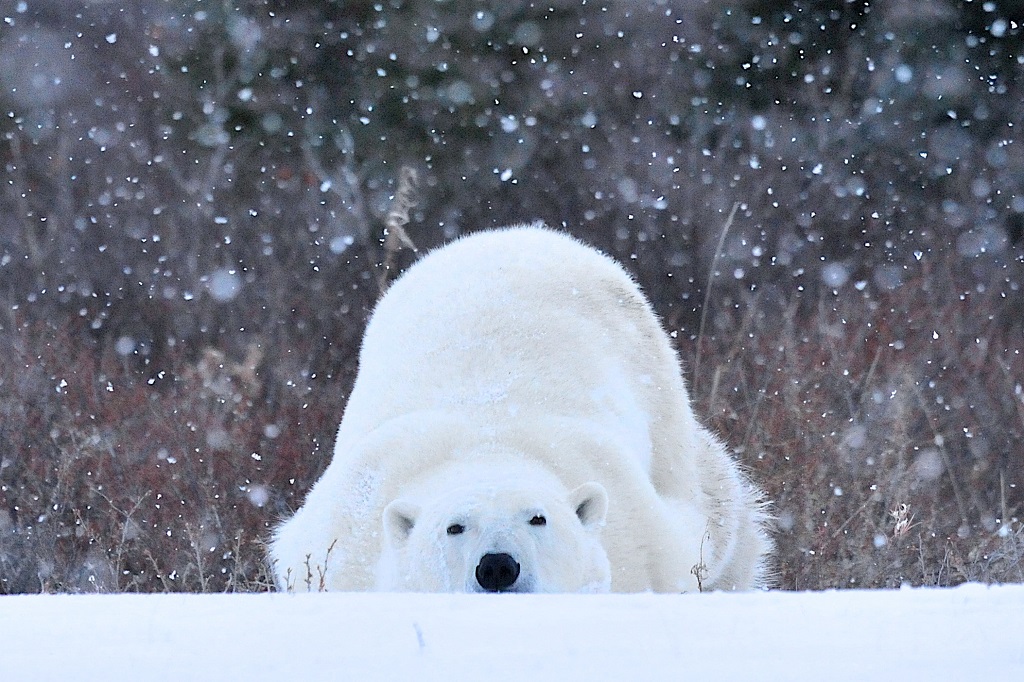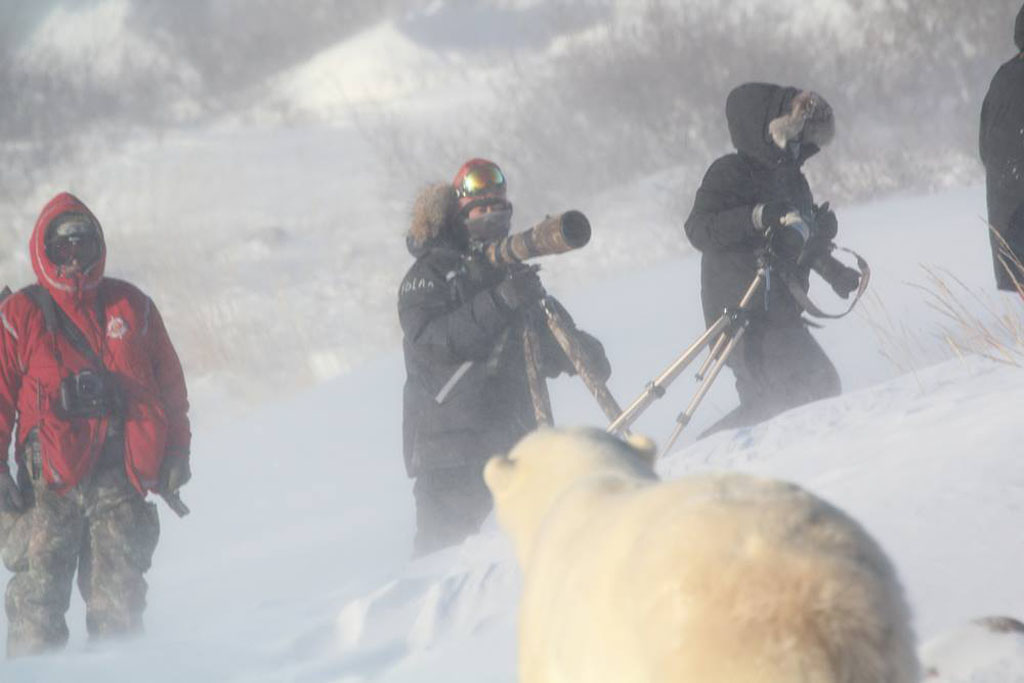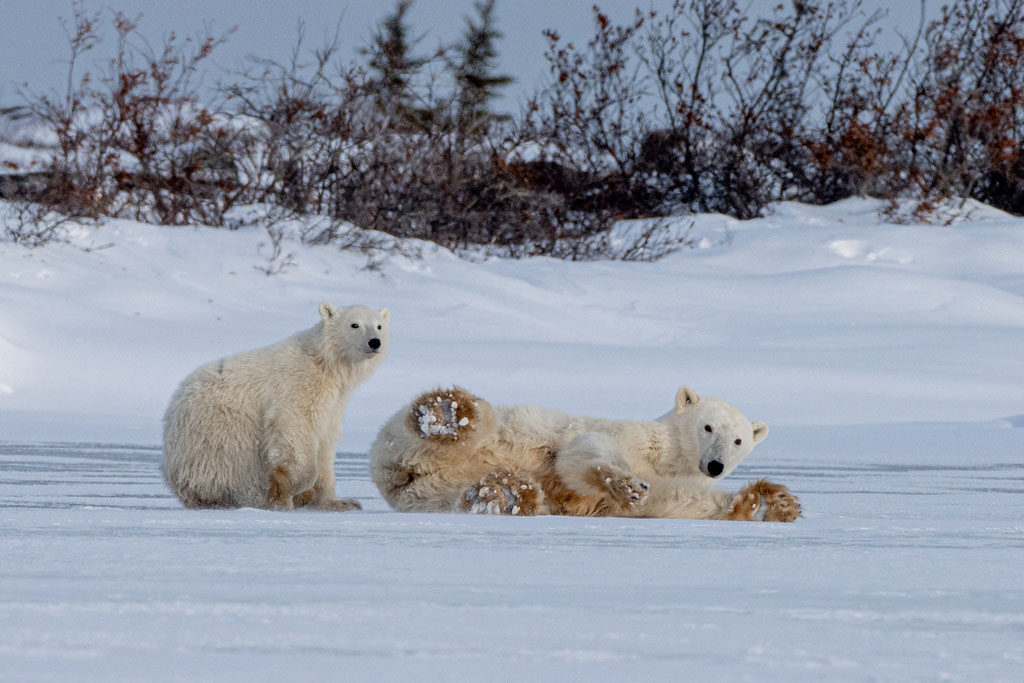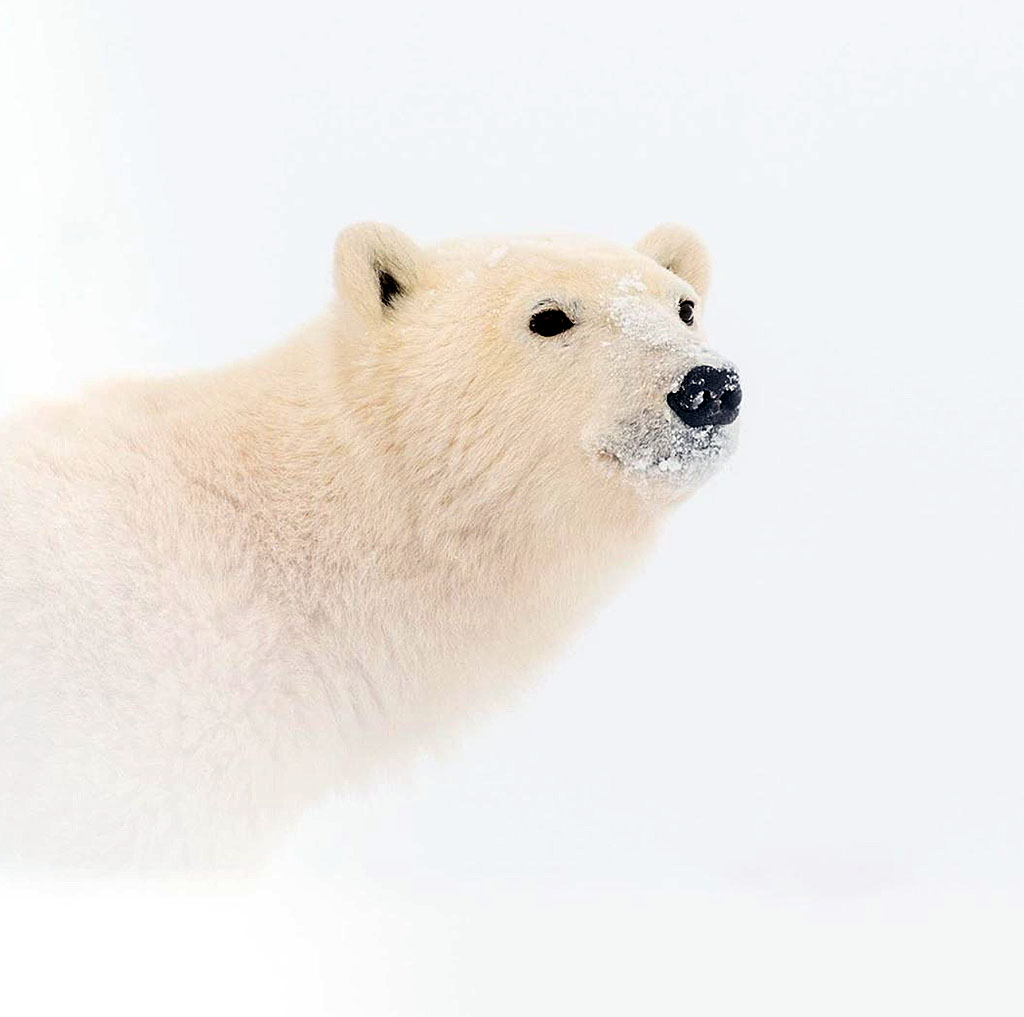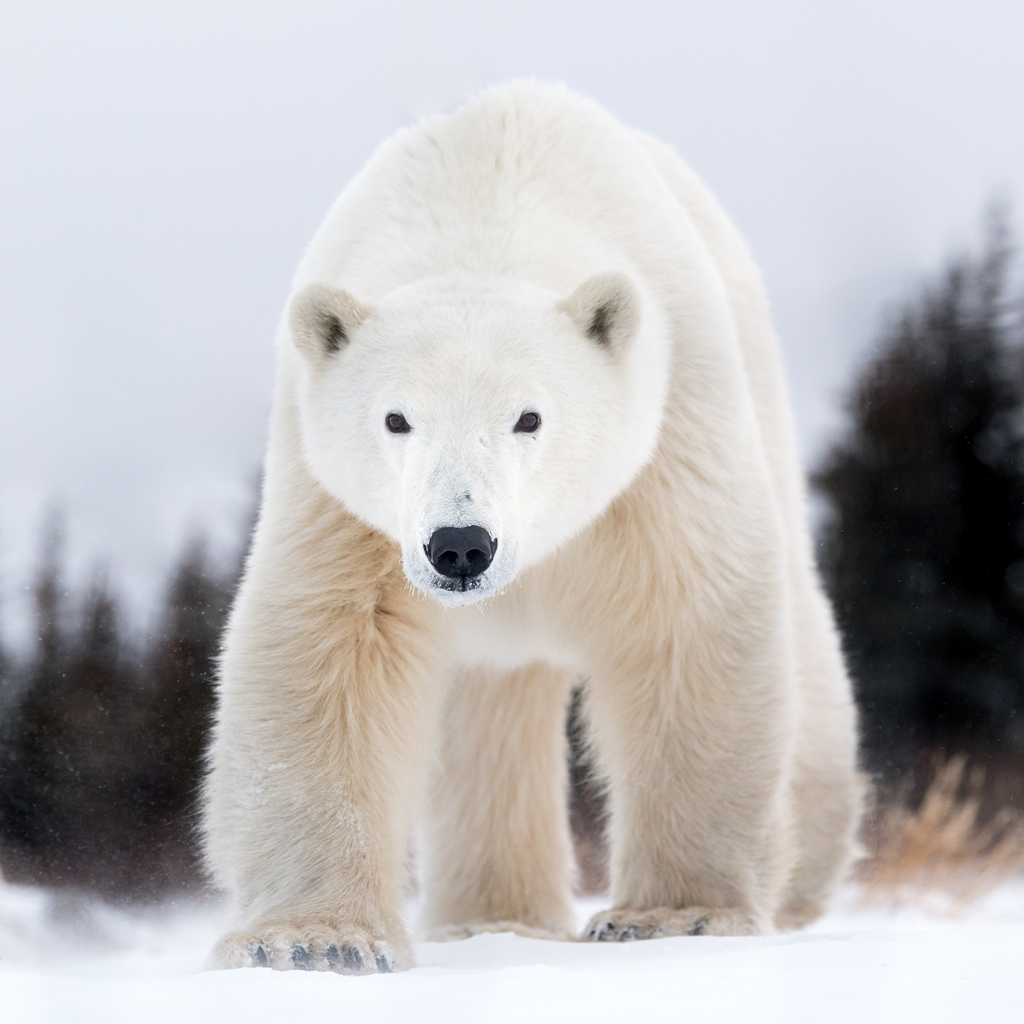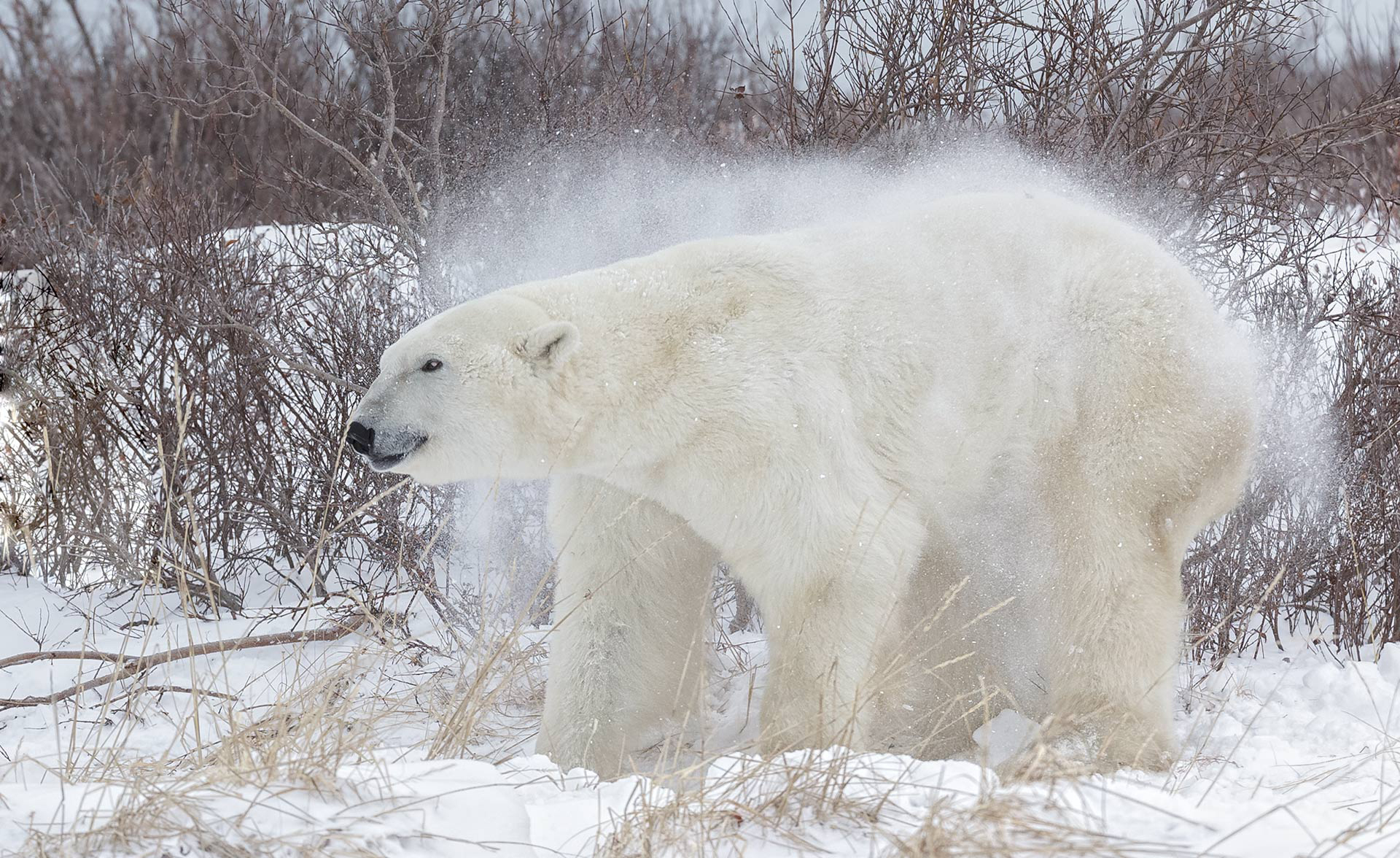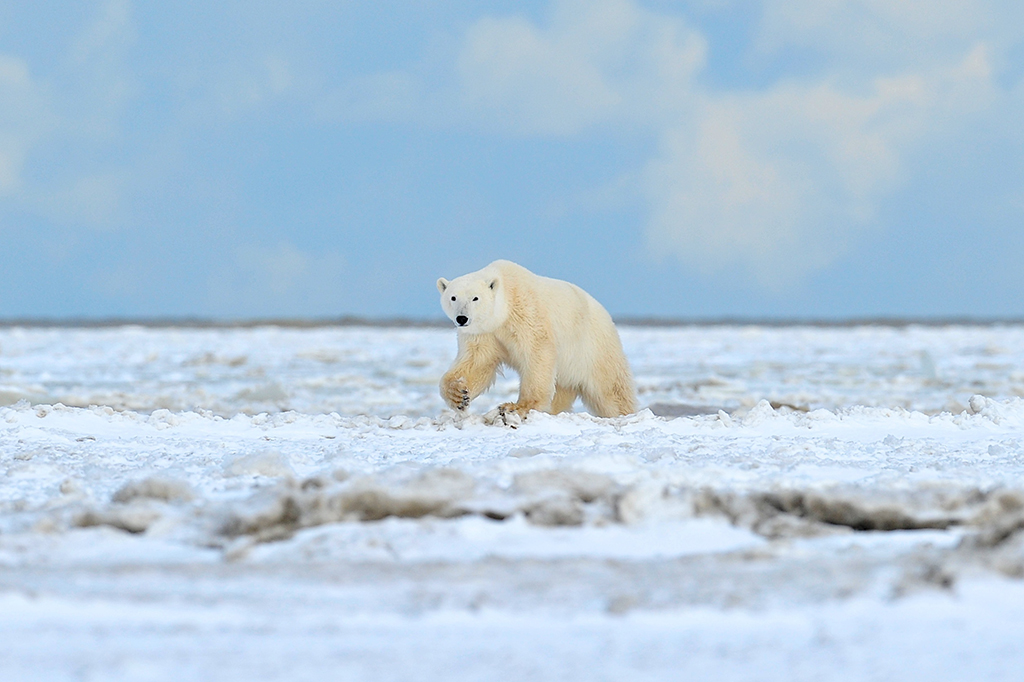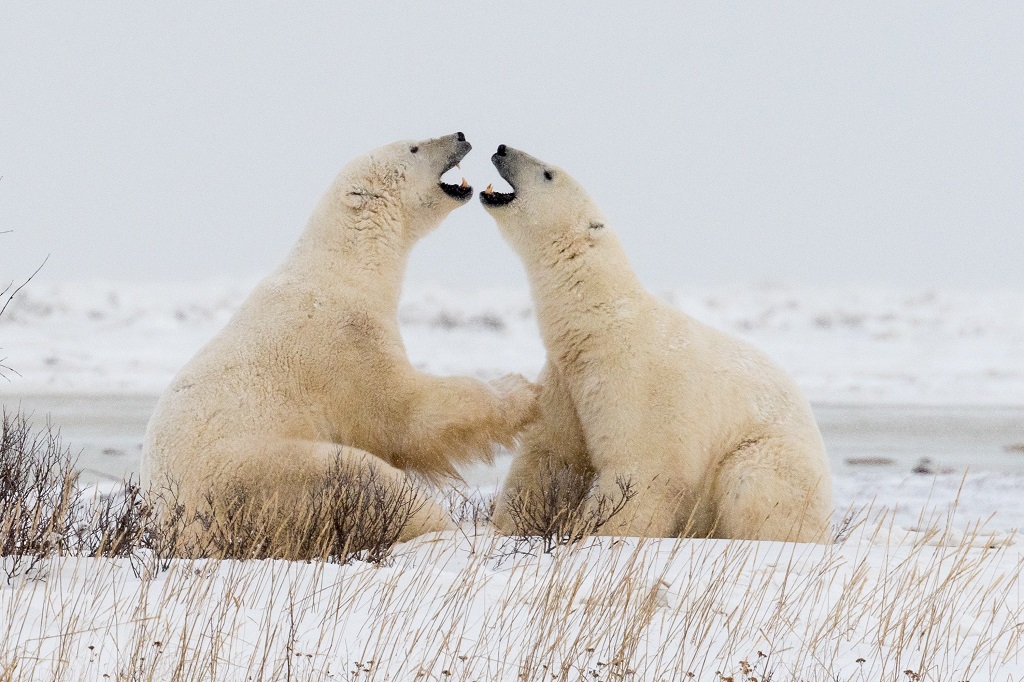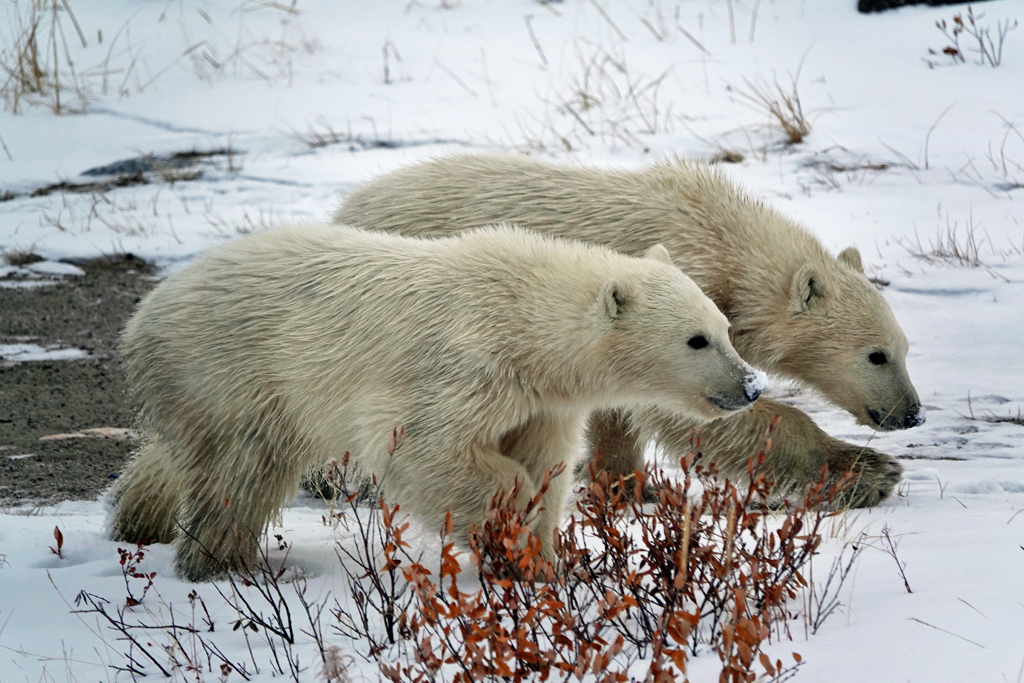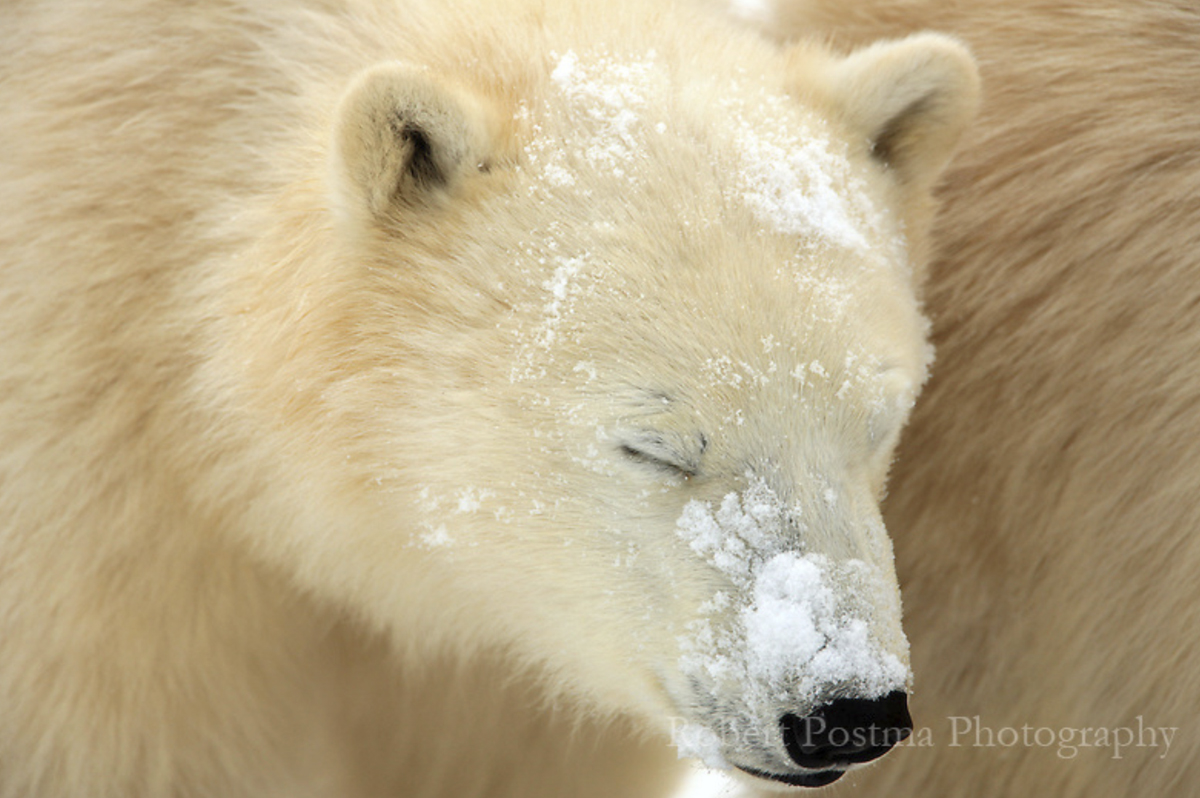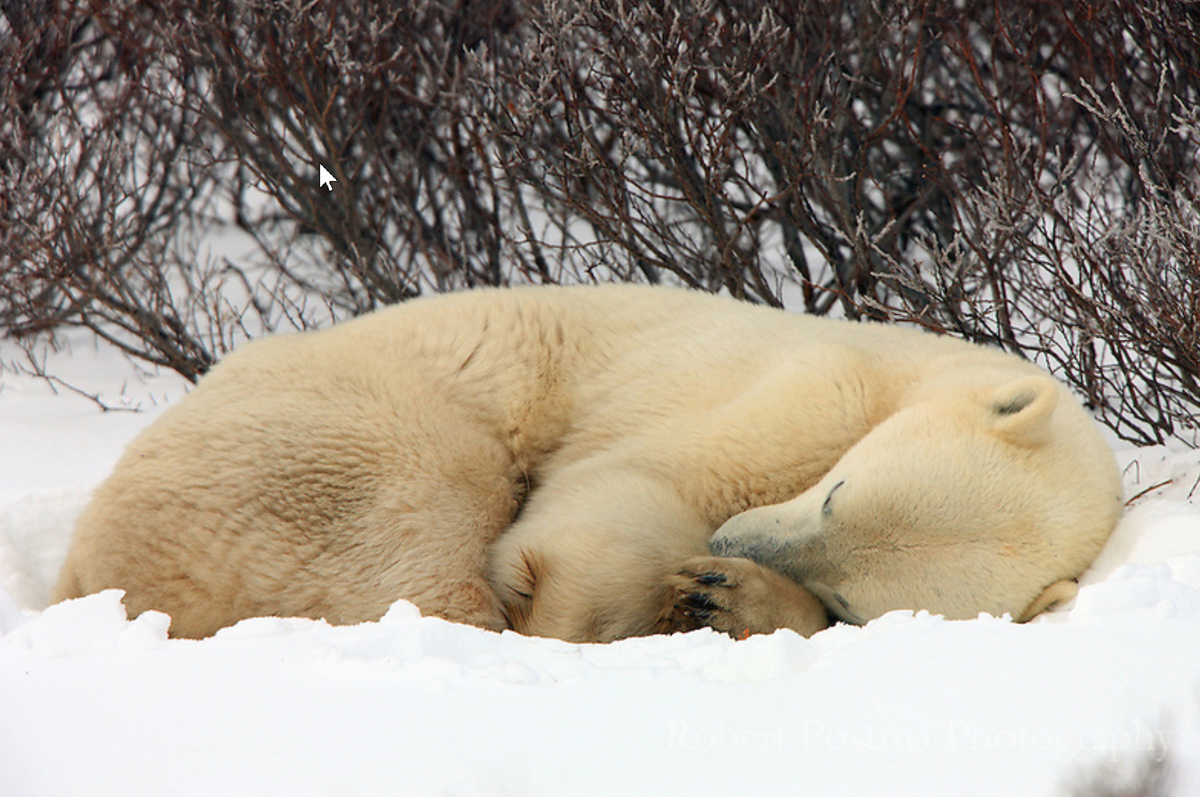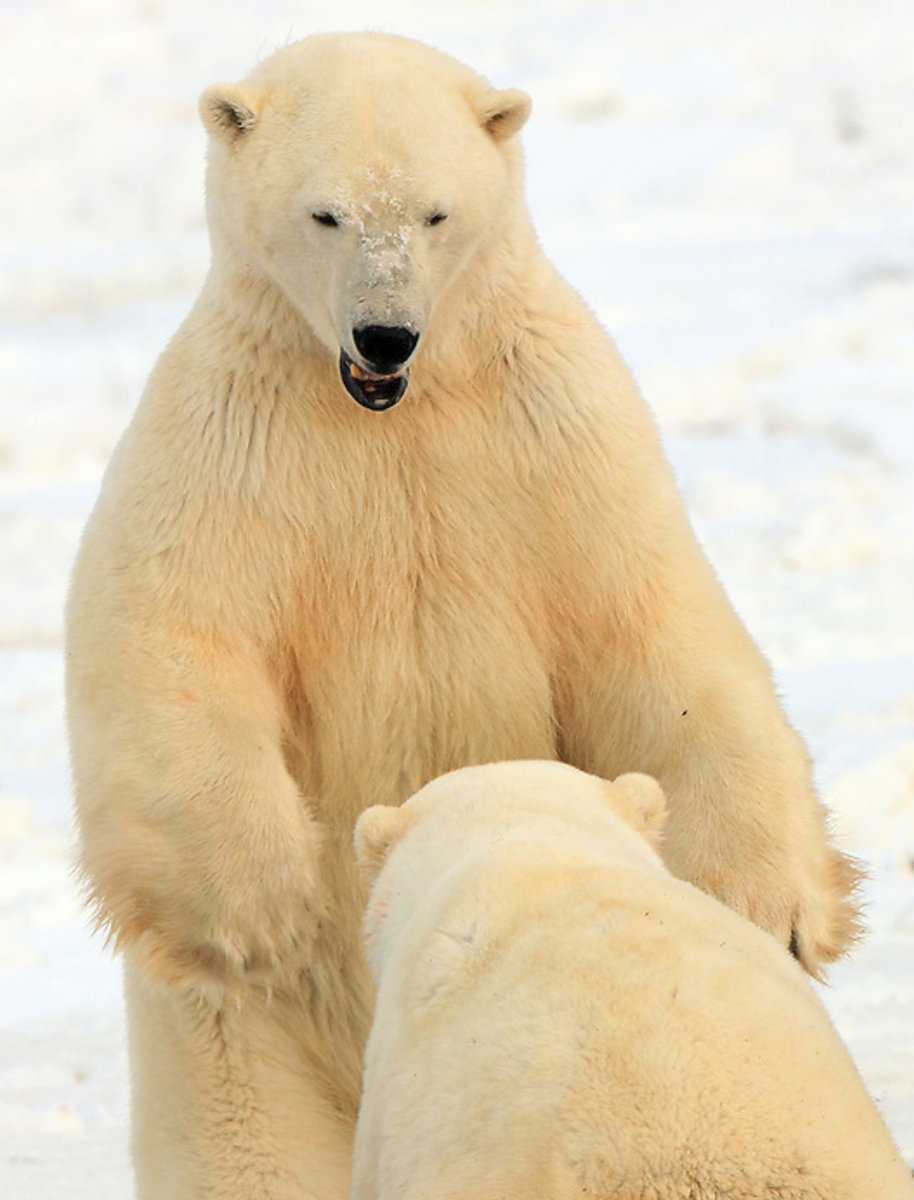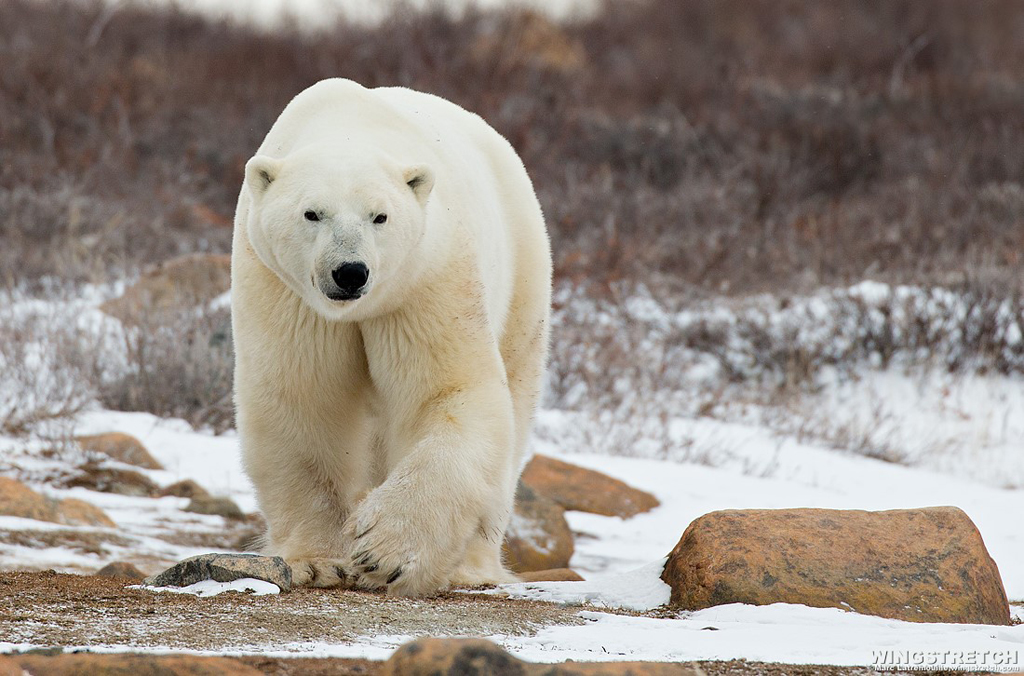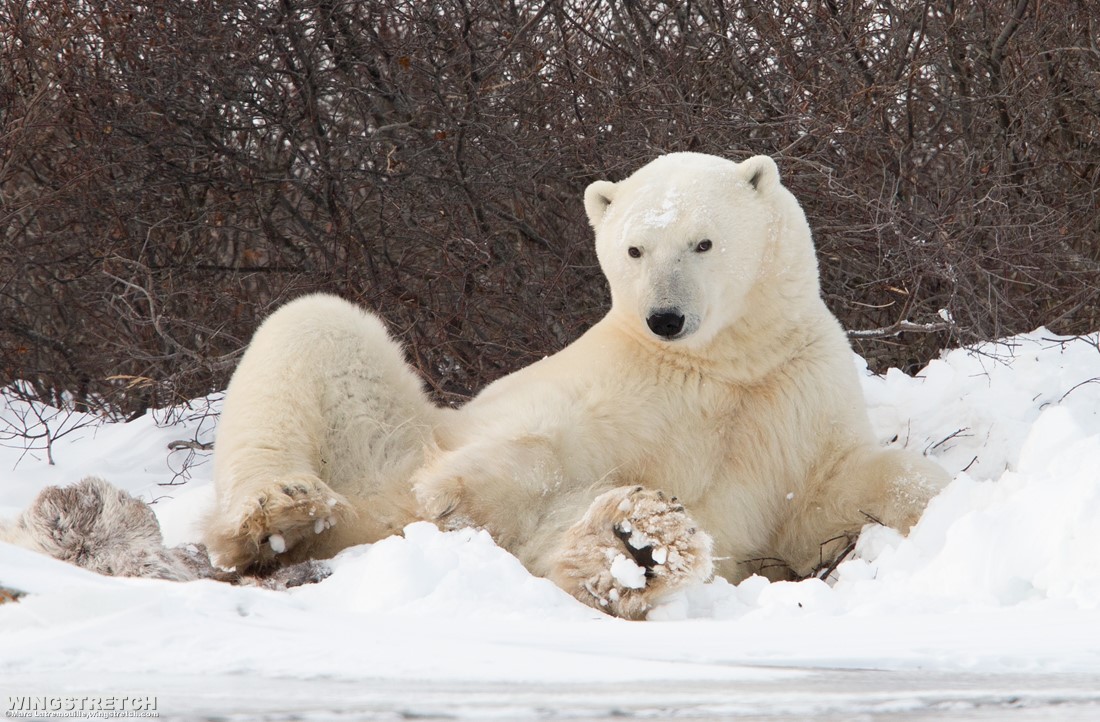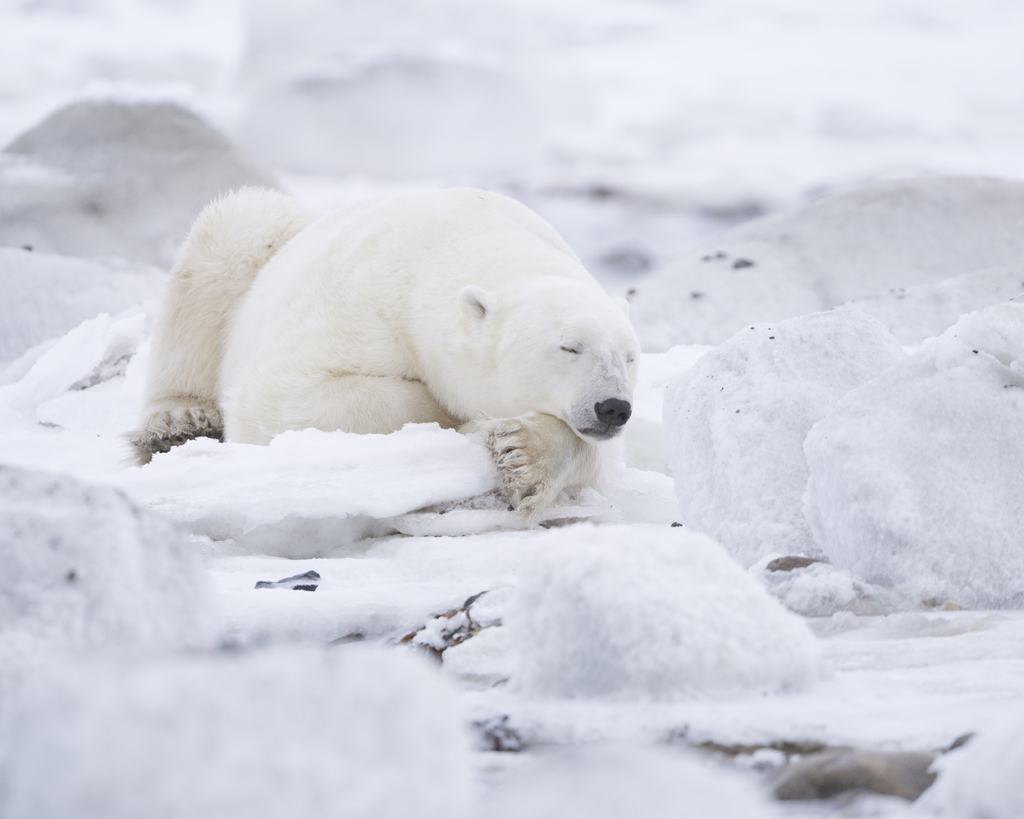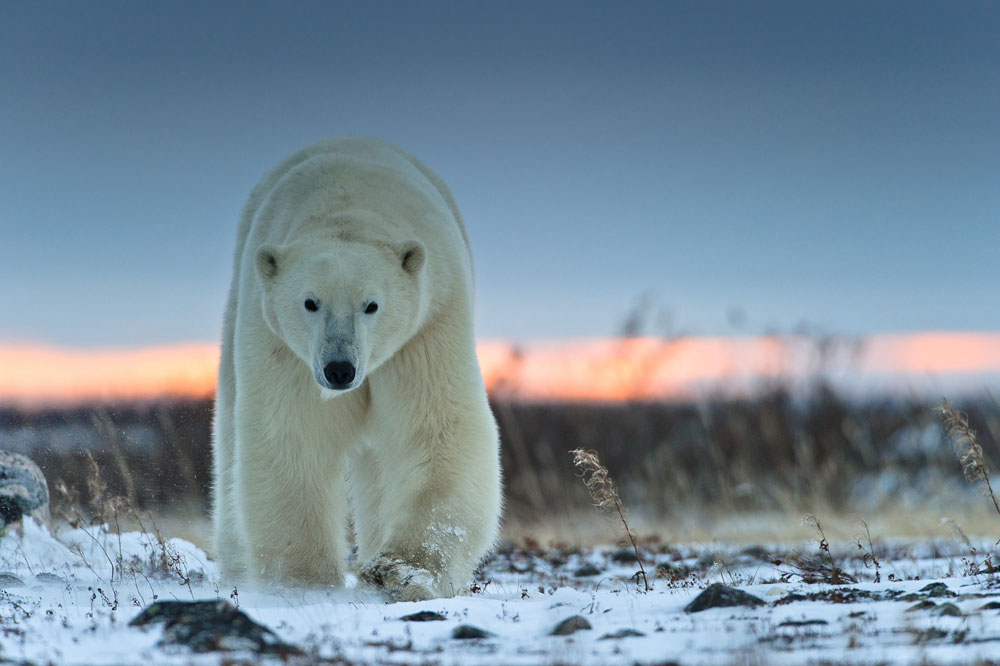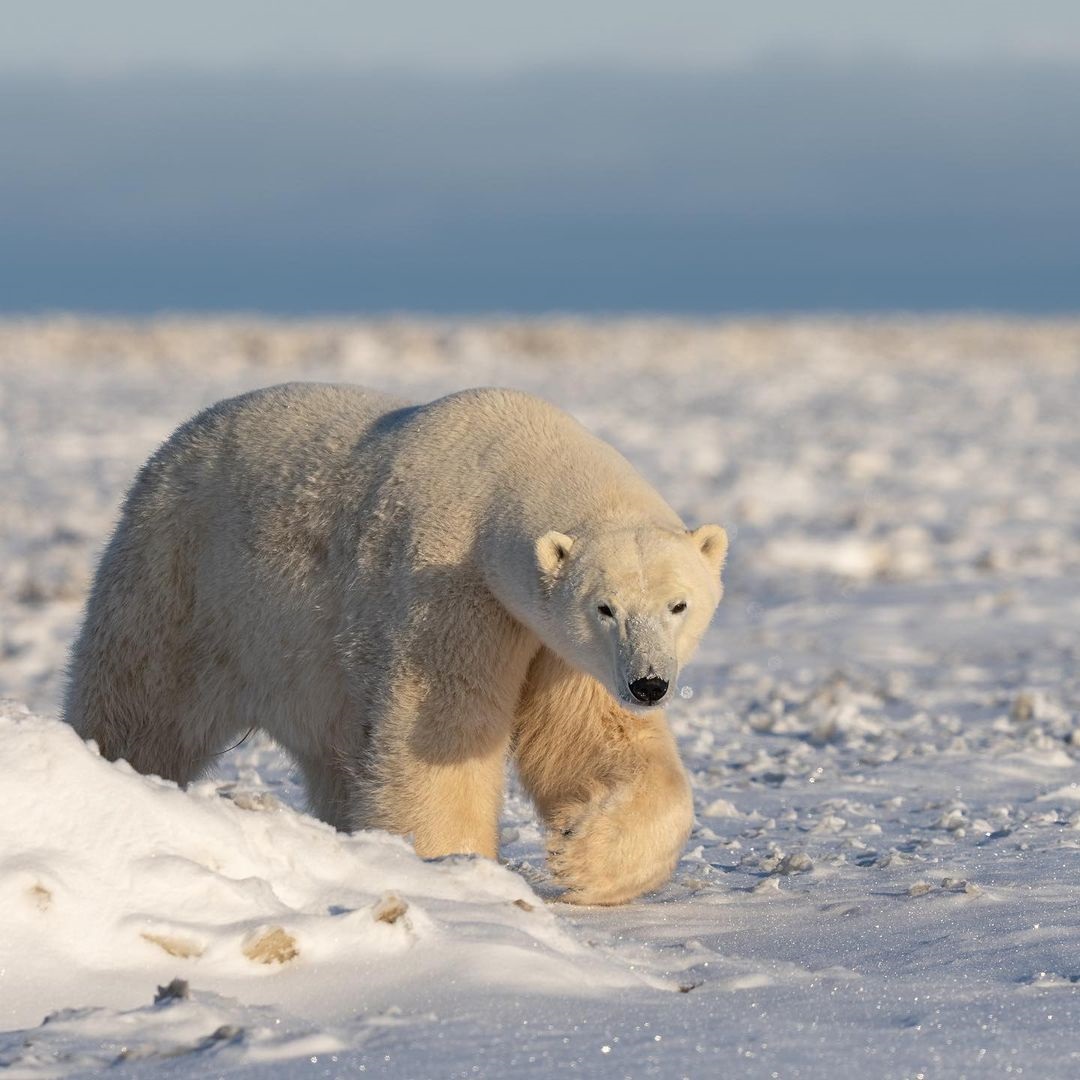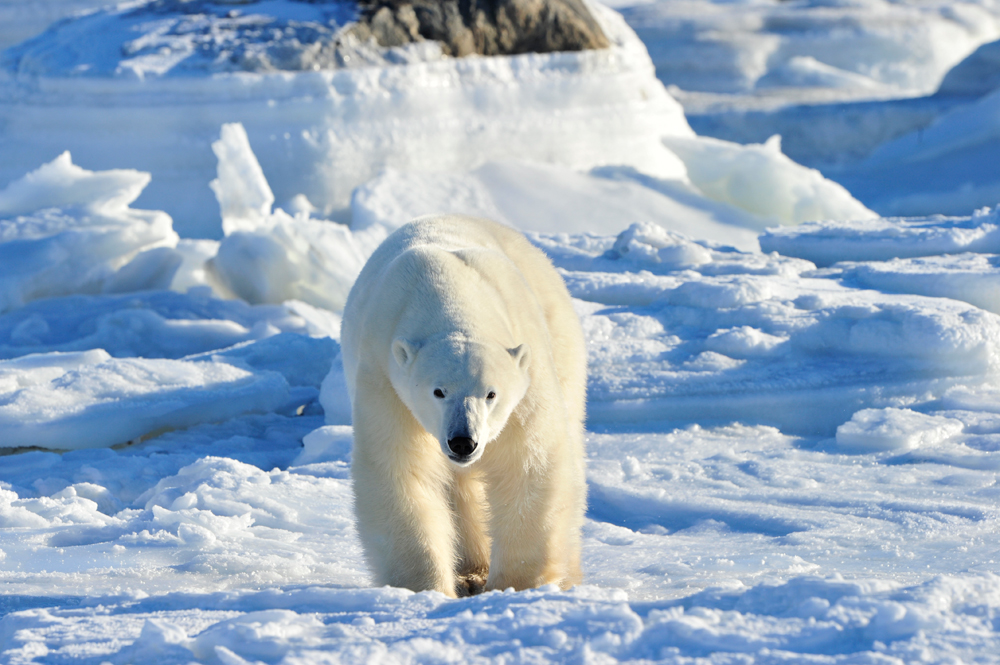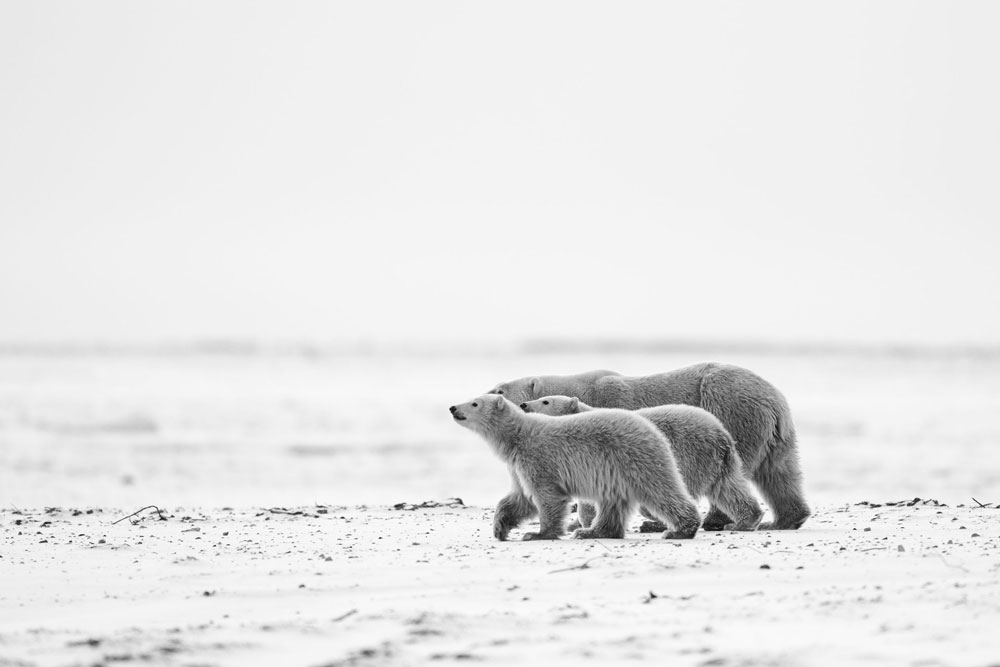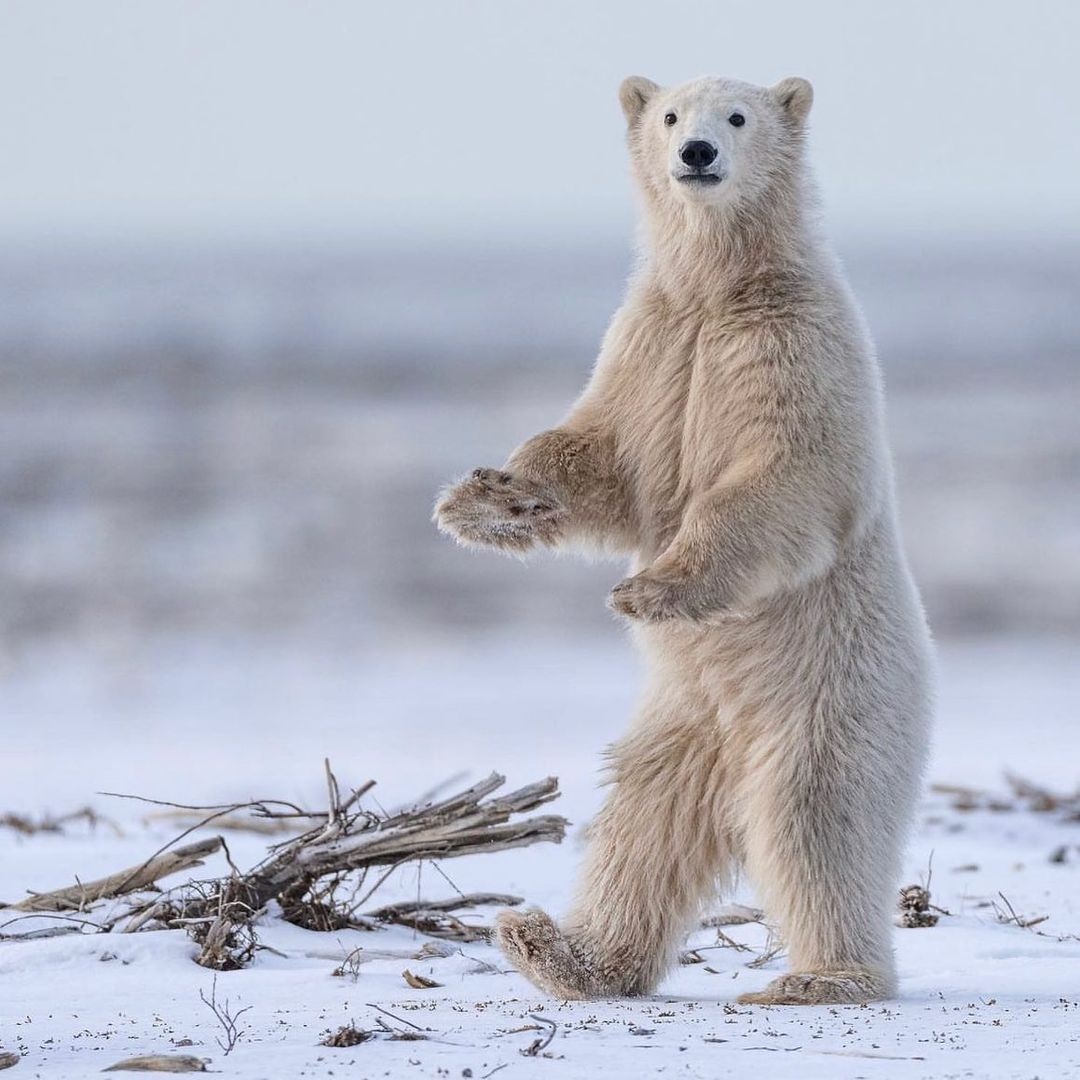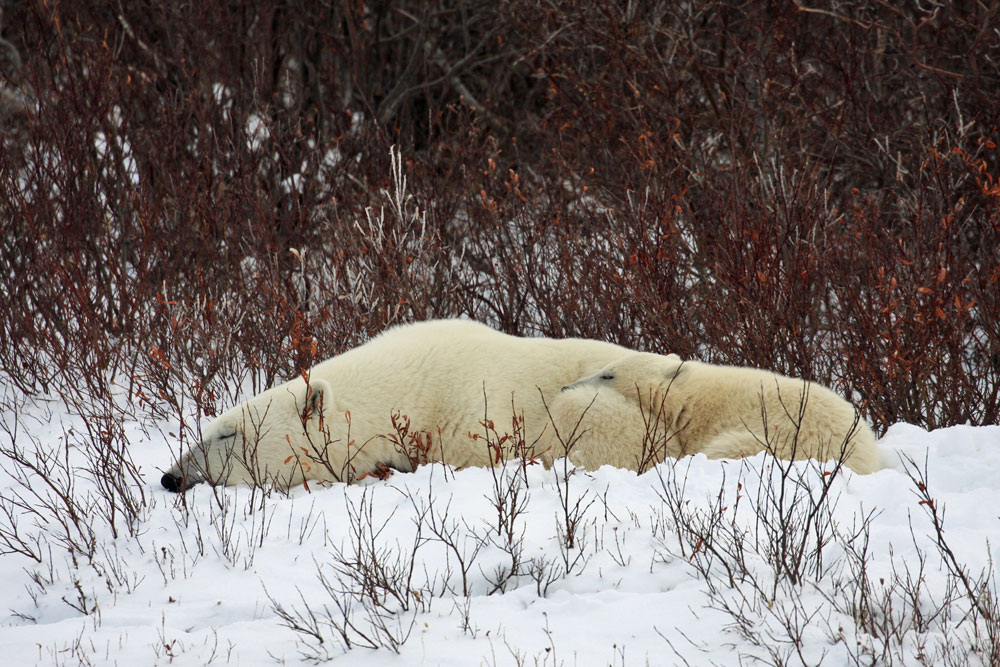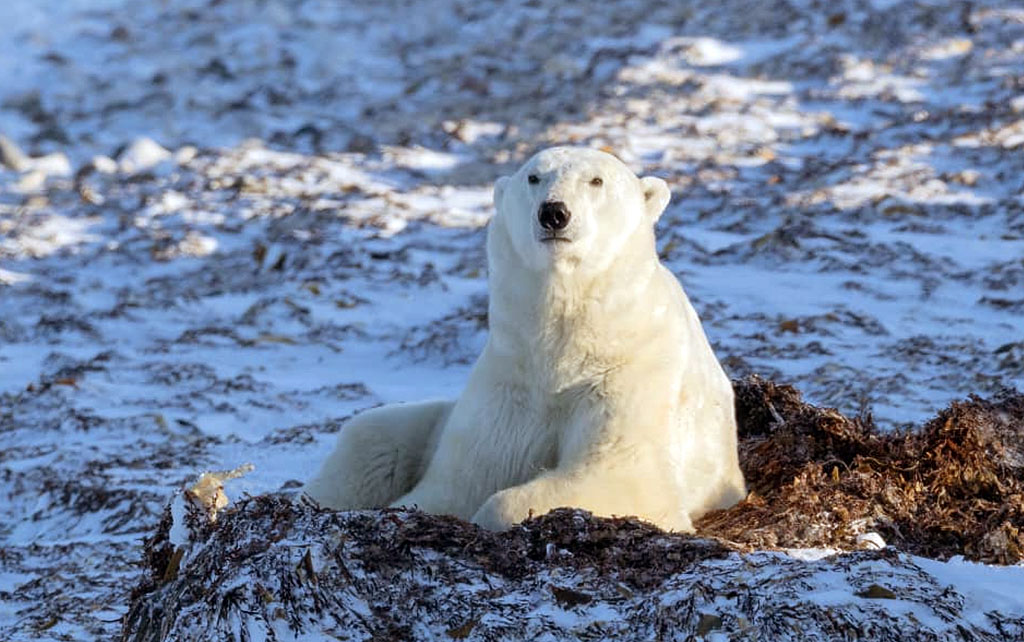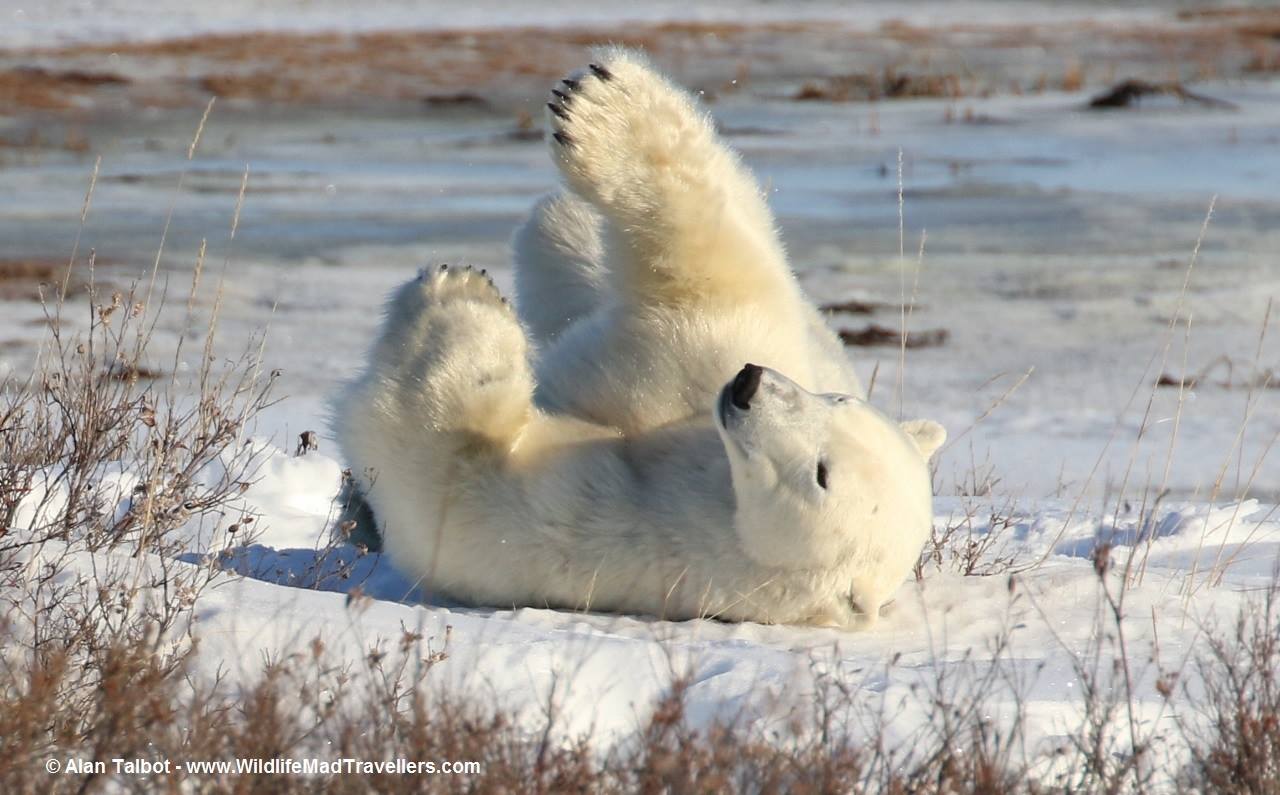
Beauty with a purpose. Polar bear in the willows at Nanuk Polar Bear Lodge. (Christoph and Fabienne Jansen / ArcticWild.net photo)
Churchill Wild’s three ecolodges on the Hudson Bay coast are the only place in the world where you can safely take ground-level photos of polar bears while also staying in Arctic luxury ecolodges, but there are more important reasons why we provide world-class photography opportunities for the planet’s largest land predator.
The polar bear, with its powerful stature and pristine white coat, stands as an iconic symbol of the Arctic’s fragile ecosystem. Statistics, reports, and documentaries highlight the threats to polar bears posed by climate change, but an even greater understanding is created when people witness these majestic creatures up close. Walking with polar bears and observing them in their natural habitat serves as a potent tool for environmental advocacy in the following ways:
1. Personal Connection and Emotional Impact:
Being in close proximity to polar bears creates an emotional bond. Observing their behaviours, understanding their routines, and marvelling at their grace humanizes the narrative around climate change. It’s no longer an abstract concept or a distant threat; it becomes a tangible reality, affecting animals you’ve personally encountered.
2. A Window to the Ecosystem:
Polar bears are apex predators and are indicative of the health of the entire Arctic ecosystem. As guests witness polar bears in their home environment, they also gain insights into the broader ecosystem’s intricacies. The melting ice, shifting migratory patterns of seals (a primary food source for the bears), and other subtle environmental changes become observable. Such firsthand observations underscore the interconnectedness of climate change effects.
3. Amplifying the Message:
Visitors who’ve had the privilege of walking with polar bears often become avid ambassadors for polar bears and their habitat. Their stories, photographs, and experiences shared on social media, with friends, or within communities can amplify the message about the urgency of addressing climate change.
4. Educational Opportunities:
Churchill Wild’s ground-level polar bear tours are accompanied by a wealth of educational information. Expert guides explain the life cycle of polar bears, their challenges, and how climate change disrupts their habitat. This education, coupled with direct observation, equips guests with knowledge that they can share, further spreading awareness.
5. Economic Incentives for Conservation:
When done responsibly, polar bear tourism can generate significant revenue for local communities like Churchill, Manitoba. This economic benefit can incentivize the preservation of polar bear habitats and support research and conservation initiatives. It’s a demonstration that protecting the environment can be synergistic with economic growth.
6. A Platform for Climate Change Discussions:
Tourism hubs centered around polar bear viewing become gathering places for diverse groups of people. Such settings naturally foster discussions on climate change, its impacts, and potential solutions, engaging individuals from various backgrounds and regions.
7. Demonstrating the Urgency:
Observing polar bears waiting longer than usual for the ice to form, or hunting beluga whales during the summer, are just a few examples that illustrate the change in the Arctic environment, and the ability of the bears to adapt, bringing a sense of urgency to their plight. Such visuals underscore the immediacy of the threats they face, moving the discussion from future projections to current crises.

Guests viewing polar bear at ground level in blue light. Seal River Heritage Lodge. (Ian Johnson photo)
In essence, walking with polar bears transforms the discourse on climate change from a scientific debate to a personal cause. Those privileged to witness the majesty of these creatures in the wild inevitably become woven into the narrative of their survival, playing a vital role in echoing the call to protect the Arctic, its inhabitants, and, by extension, our planet.
Polar Bear Week takes place this year from October 29 to November 4. Polar Bears International created this awareness event to celebrate the polar bears and draw attention to threats they face in a warming Arctic. You can help by visiting their website and making a donation in support of Polar Bears International’s coexistence efforts.
The polar bear photos below were taken over the years by guests and photographers as the ice was beginning to form on Hudson Bay around Seal River Heritage Lodge, Nanuk Polar Bear Lodge and Dymond Lake Ecolodge. Some of these photos have received millions of views on social media platforms and across the Internet, as well as in elite publications, and as part of video presentations and film documentaries, helping to create a greater level of awareness for polar bears in general, and the challenges they face.
Beauty, with a purpose.








